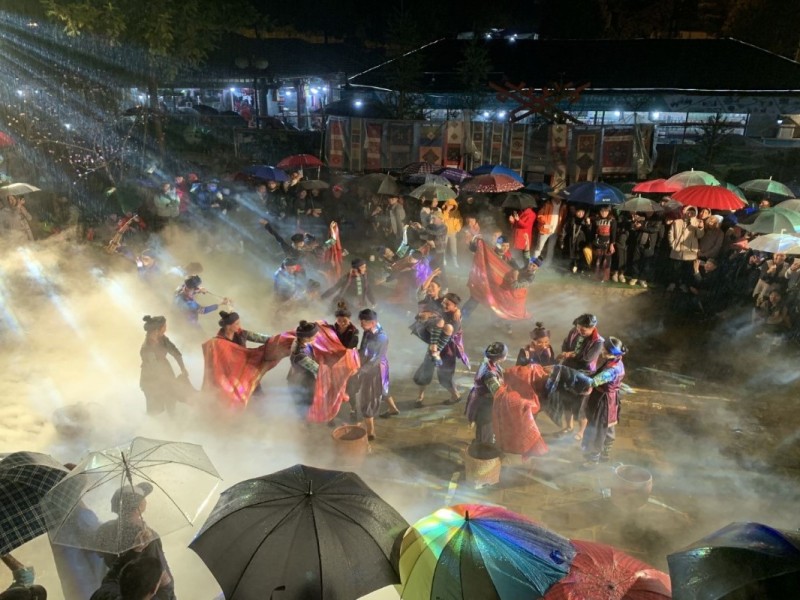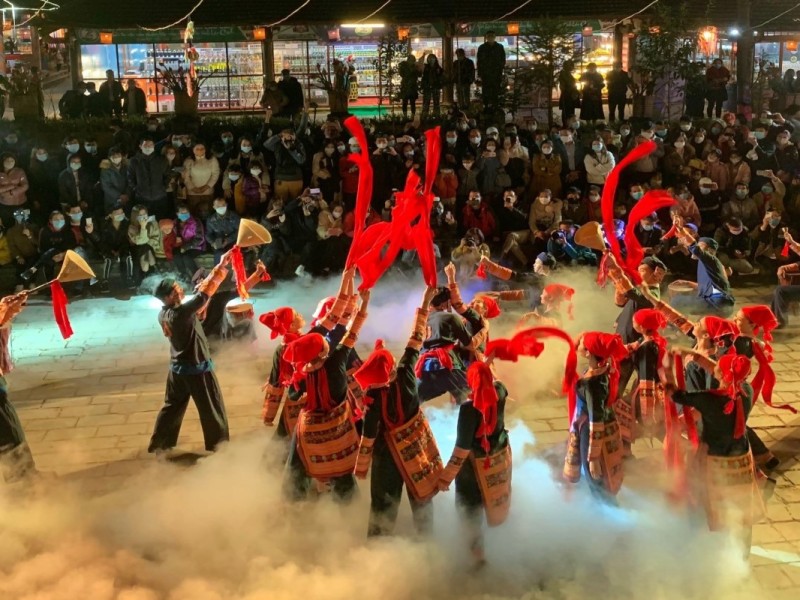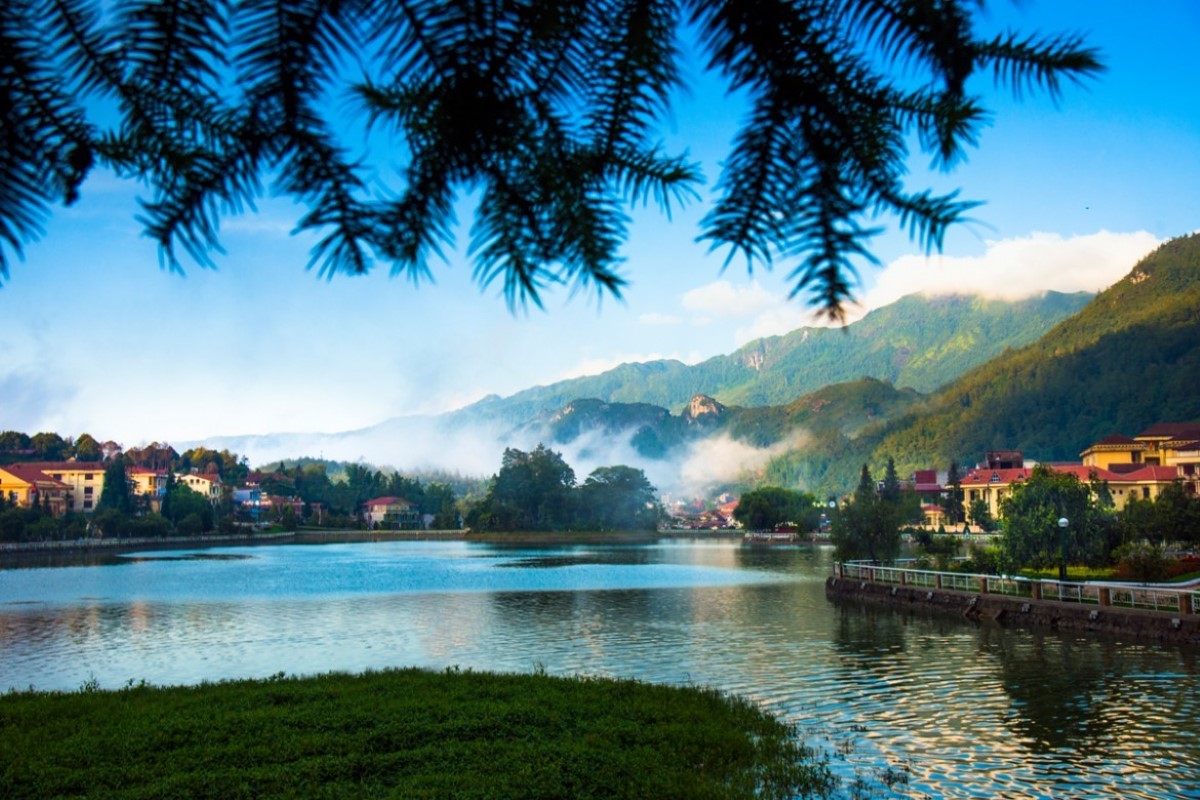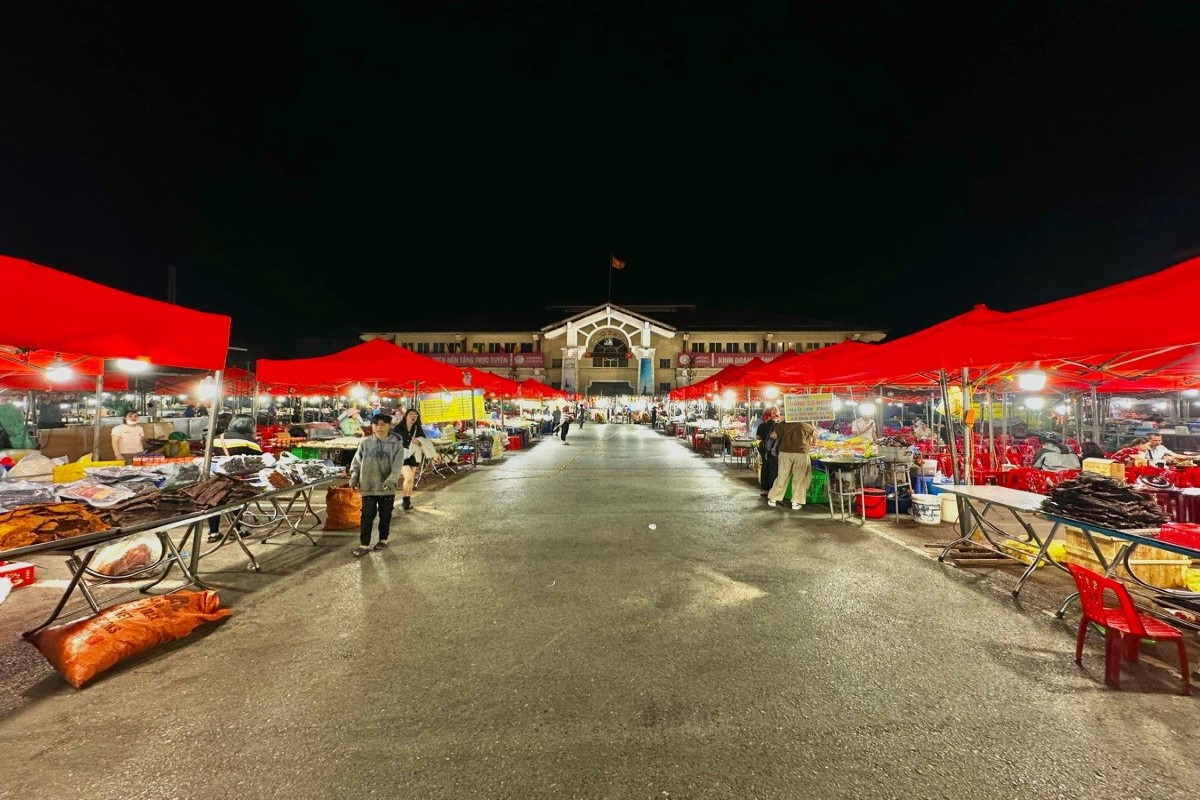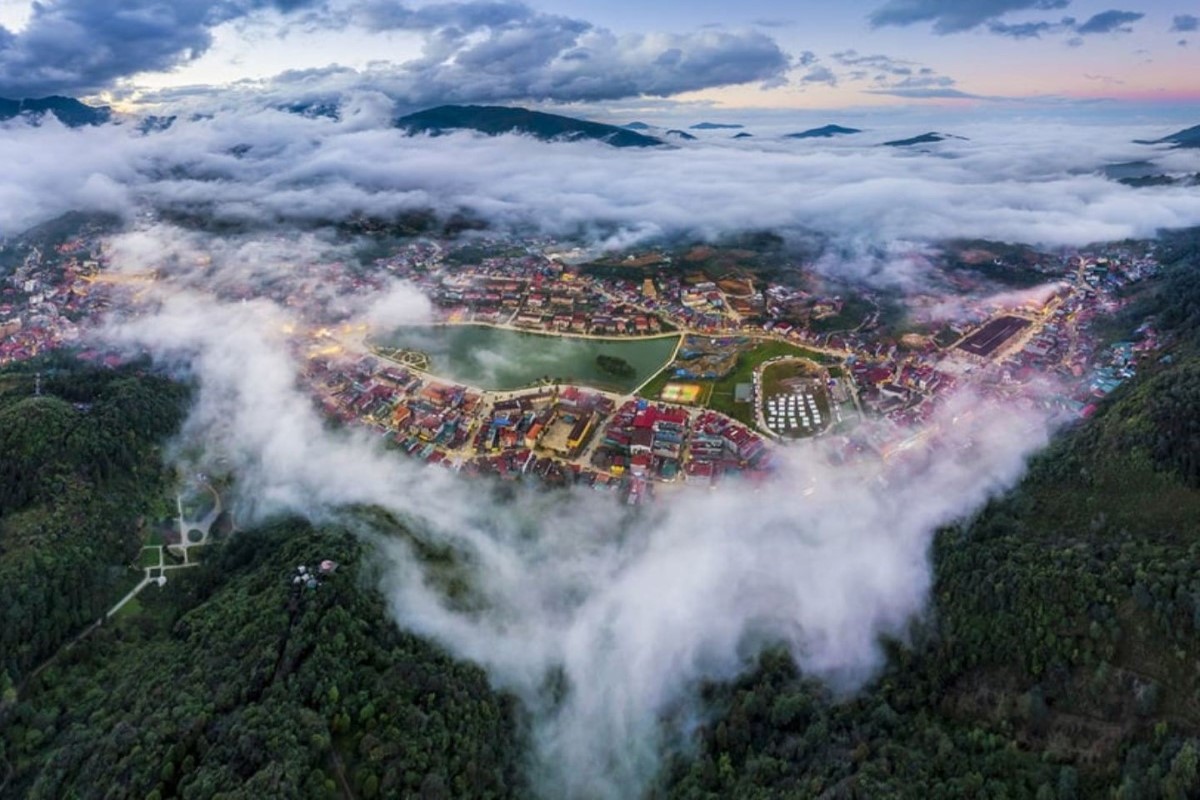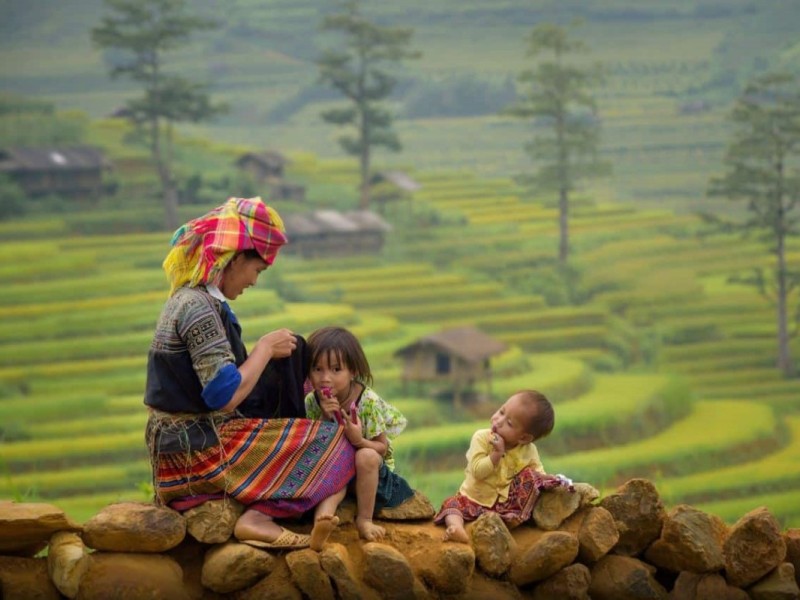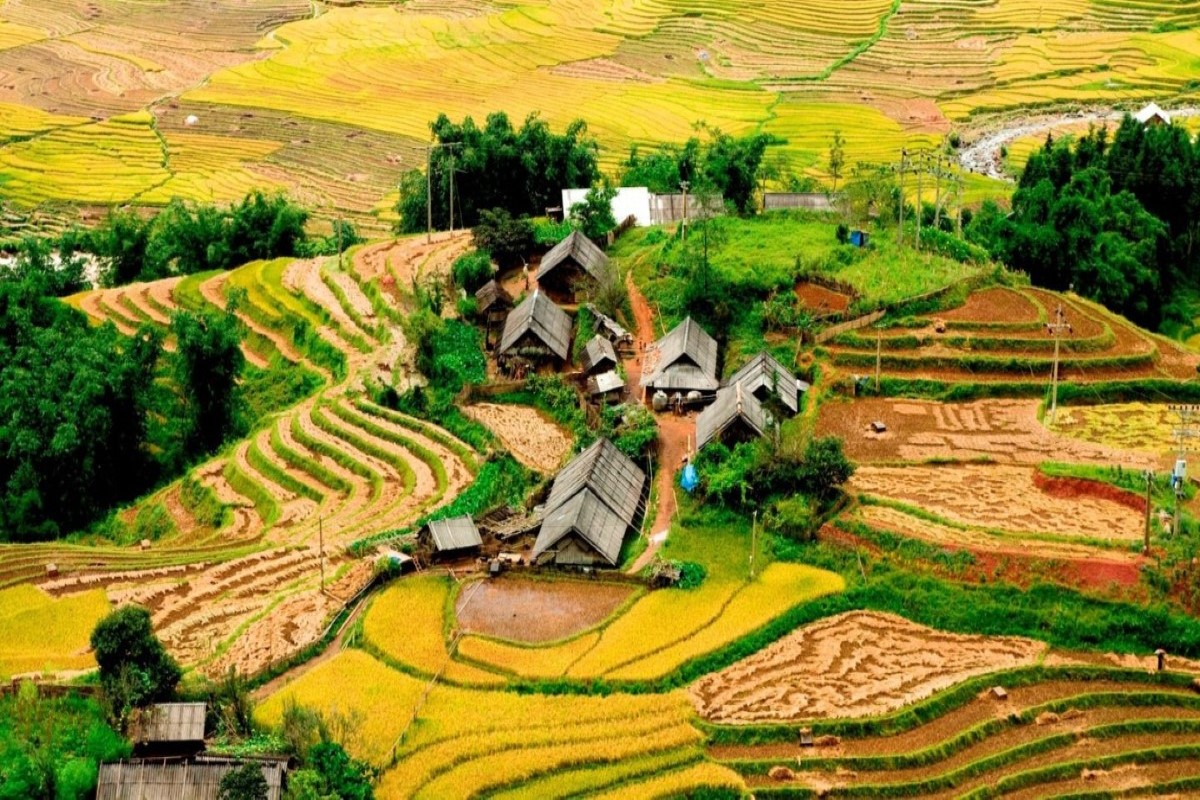Y Linh Ho Village Sapa: Complete Guide to Trekking, Culture & Tips
Y Linh Ho Village Sapa is a peaceful mountain village known for its scenic rice terraces, Black Hmong culture, and authentic homestay experiences. Visitors can enjoy trekking through lush valleys, learning local crafts, and experiencing daily life with fewer tourists than in other Sapa villages, making it ideal for a genuine cultural adventure.
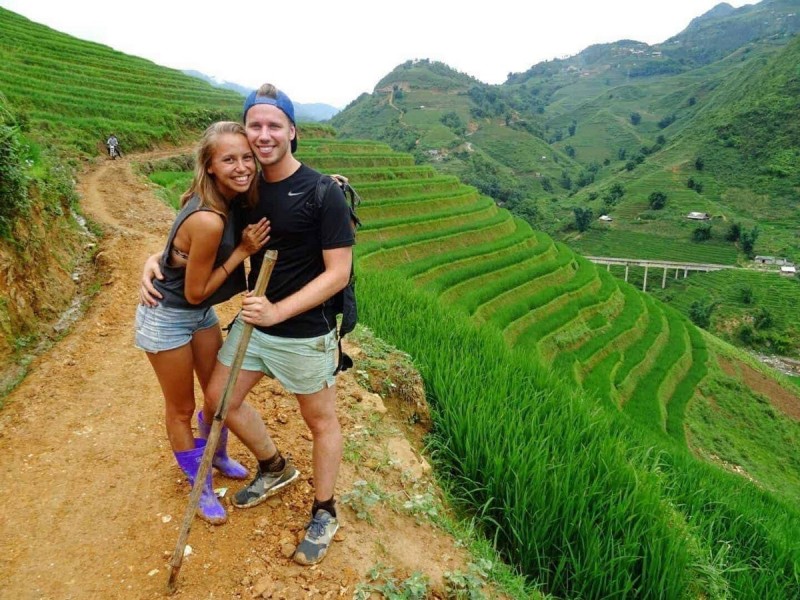
Discovering Y Linh Ho Village Sapa – An Introduction
Tucked away in the rolling mountains of northern Vietnam, Y Linh Ho Village Sapa offers a rare invitation into the heart of authentic village life. Here, the air is crisp, the landscapes endlessly green, and every footstep feels like an entry into a quieter, more honest world. Unlike the bustling tourist spots that often steal the spotlight, this village keeps its secrets gently—revealing them only to those who wander with genuine curiosity.
From the first moment, you sense that Y Linh Ho Village Sapa is more than a destination; it’s a living tapestry of nature and culture, shaped by generations of the Black Hmong community. Each sunrise over the terraced fields feels like a fresh promise, and the sound of a distant stream blends with the soft voices of locals beginning their day. This is the kind of place where time slows, letting you truly see, hear, and feel the world around you.
If you’re searching for an authentic village atmosphere in Sapa and long for a journey beyond the typical, let yourself be drawn into the rhythms and stories that make this hidden valley unforgettable. To discover more about the village’s unique allure, read on and start imagining your own adventure.
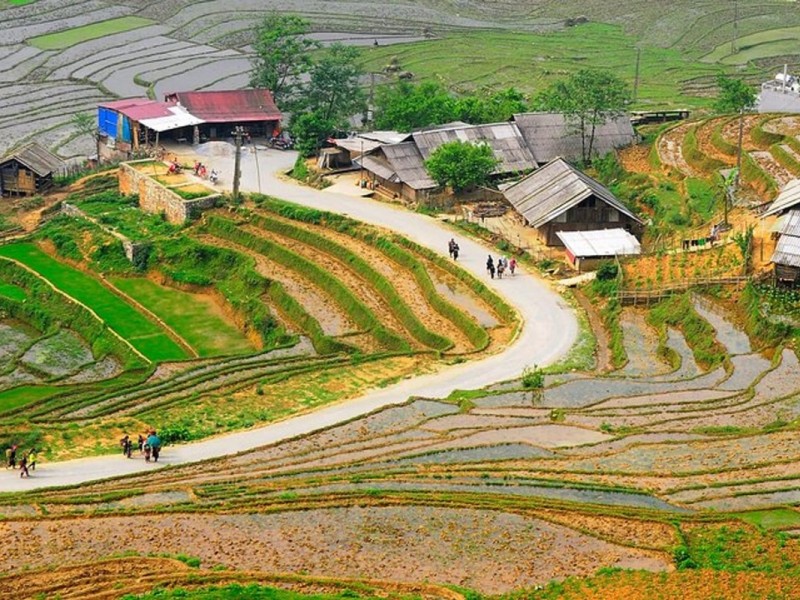
What Makes Y Linh Ho Village Unique in Sapa?
Some places quietly demand your attention, and Y Linh Ho Village is one of them. What sets it apart is its commitment to authenticity—a quality that resonates with anyone seeking true Sapa cultural experiences.
- Less touched by modern tourism, the village maintains a peaceful pace and unspoiled beauty.
• The presence of the Black Hmong people, who have shaped these hills for centuries, creates a rich, living link to tradition and community. - A sense of remoteness brings a special clarity: here, daily life unfolds as it always has, offering genuine local interactions and a deeper understanding of rural village exploration.
- If you’ve ever wondered why visit Y Linh Ho Village Sapa instead of the better-known destinations, consider this: here, it’s not about sightseeing, but about being welcomed into a world still guided by natural cycles and ancient customs.
Whether you’re fascinated by the allure of Sapa hidden villages or simply wish to immerse yourself in a slower, more mindful travel experience, this is a place that rewards your attention. Let your curiosity guide you, and you’ll find the difference is real.
Untouched nature and traditional Black Hmong culture
Y Linh Ho Village is a patchwork of terraced fields and winding paths that seem untouched by time. The spirit of the Black Hmong culture is everywhere: in the intricate embroidery on traditional clothing, the sturdy wooden stilt houses nestled among the rice paddies, and the sound of the ethnic language that echoes in the breeze.
- Terraced fields: Endless waves of green and gold, shaped by hand over generations, offer breathtaking panoramas and a lesson in harmony with the land.
- Black Hmong clothing: Deep indigo garments, adorned with detailed batik patterns and embroidery, reflect both practicality and artistry.
- Wooden stilt houses: Built to blend with the landscape, these homes provide comfort and shelter in all seasons, standing as a testament to sustainable living.
- Ethnic language and customs: Listen as elders share folk tales or children sing traditional songs—every word a piece of living history.
- Lush valleys and streams: The landscape’s beauty is heightened by its quiet, with only the rustle of bamboo or the gentle rush of water breaking the silence.
To experience Sapa cultural experiences at their purest, take the time to observe, listen, and interact. The rewards are moments of understanding that can only be found in places still shaped by tradition. If your heart is drawn to the idea of traditional Black Hmong culture, you’ll find it here in every detail.
Fewer tourists and an authentic village atmosphere
One of the greatest luxuries of Y Linh Ho Village is its rare sense of peace. While other parts of Sapa fill with groups and guides, here you’ll find yourself welcomed quietly, as if you’ve stumbled onto a secret only a few know.
- Tranquil surroundings: The sounds you’ll notice first are natural—birds, wind, laughter from a nearby field—not the hum of engines or crowds.
- Genuine local interactions: Conversations happen naturally, with locals who are proud to share their way of life rather than perform for passing tourists.
- Slower rhythms: Days are measured by the sun and the work of the season, not by the demands of an itinerary or schedule.
- Less-touristy Sapa: You’ll never have to elbow your way to a viewpoint or rush to beat the crowds; here, it’s always possible to pause and soak in the view.
- Immersive village experience: The absence of commercial distractions lets you focus on what matters—connection, observation, and reflection.
If you’ve ever yearned for a journey that’s truly yours, Y Linh Ho Village proves that real discovery happens where the world is still allowed to breathe. Those who seek fewer tourists in Sapa and a genuine sense of belonging will find both here in abundance.
Pause a moment and ask yourself what kind of adventure you crave. If it’s the kind marked by peace, authenticity, and a feeling of quiet awe, let Y Linh Ho Village be the next story you write.
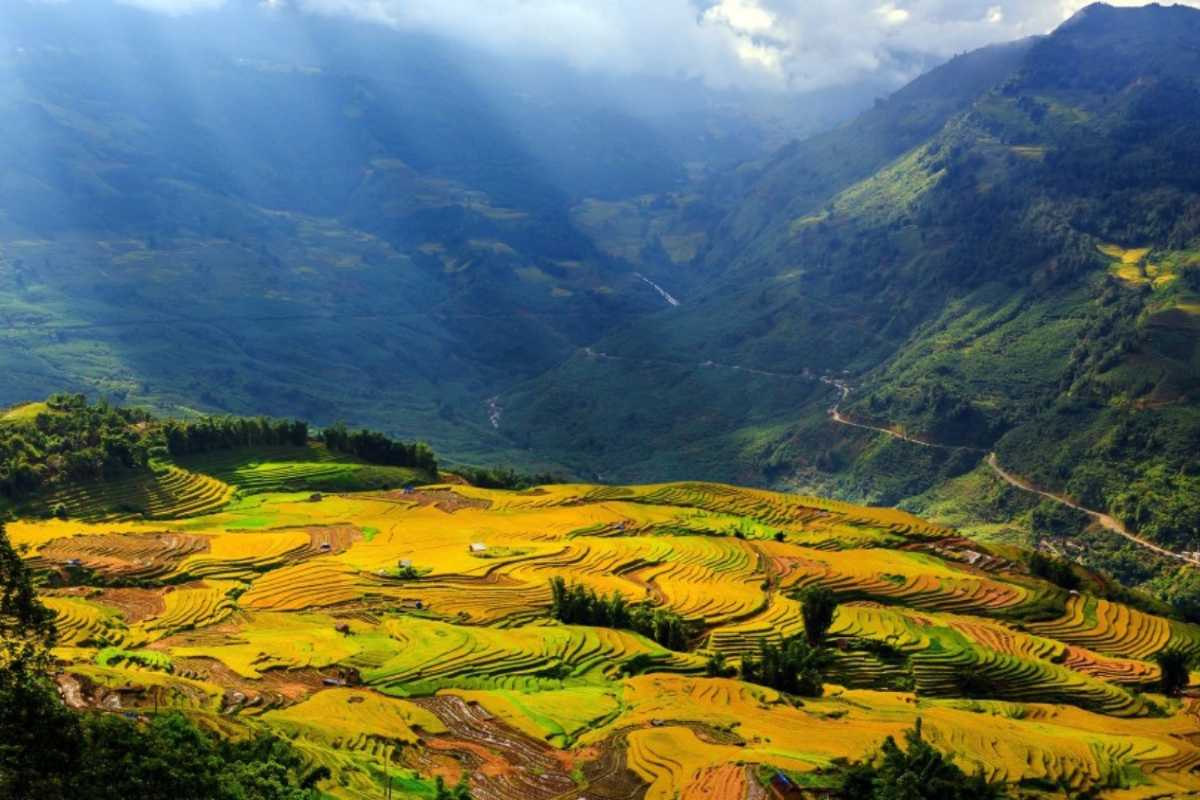
A Brief Look at the Village’s History and Culture
To truly understand the heart of Y Linh Ho Village, you have to look back through generations of careful stewardship and proud resilience. Unlike other villages in Sapa, this place holds its story close—woven through its daily rhythms, ancient customs, and the enduring presence of the Black Hmong community.
From the start, Y Linh Ho Village was shaped by a combination of challenging landscapes and unbreakable human will. The valley’s steep slopes became terraces through sheer determination, creating a lasting bond between people and land. This unique relationship still forms the basis of everyday life, and every visitor is invited to witness not just scenery, but a living chronicle of Sapa village history.
If you’re drawn to destinations that honor their past, the journey through Black Hmong culture and Y Linh Ho Village’s story will leave you with a sense of awe and respect. To understand what makes this community truly special, take a moment to appreciate the traditions and values that have endured for centuries. Let’s look deeper into the origins and legends that define this remarkable village.
Origins of the Black Hmong community in Y Linh Ho
The story of the Black Hmong in Y Linh Ho Village is one of migration and adaptation. Centuries ago, the Black Hmong journeyed from the mountainous regions of southern China, moving steadily southward and settling in the remote valleys of Sapa. Their arrival marked the beginning of a vibrant chapter for Sapa ethnic minorities and the wider region.
- Migration stories: Oral histories tell of long journeys across mountains, guided by ancestral wisdom and the search for new land.
- Cultural roots: Over time, the Black Hmong blended their traditional customs with those of other ethnic groups in the area, creating a distinct identity.
- Settlement patterns: The choice to settle in these high, terraced valleys was both practical and spiritual, with the landscape itself shaping village life.
- Lasting presence: Today, the Black Hmong form the core of the village’s population, with traditions and language passed carefully from one generation to the next.
The legacy of the Black Hmong in Y Linh Ho Village is alive in every smile, every shared story, and every hand-woven piece of cloth. If you’re curious about the origins of Black Hmong culture, this village is your doorway to discovery.
Village legends, customs, and traditional lifestyles
Every visit to Y Linh Ho Village is a step into a world where legends and daily routines merge seamlessly. The villagers keep their stories alive not in books, but in their fields, kitchens, and communal gatherings—each custom a living thread in the tapestry of Sapa life.
- Marriage rituals: Weddings are lively affairs filled with music, intricate costumes, and unique rituals, reflecting the importance of family bonds.
- Black Hmong traditions: Festivals, ancestor worship, and the making of indigo dye all play a central role in community life.
- Farming practices: The cycle of planting and harvest follows ancient methods, synchronized with the seasons and local folklore.
- Village folklore: Elders recount tales of forest spirits, lucky charms, and the wisdom of the land to both children and guests.
- Communal routines: From dawn till dusk, life is shaped by shared work, communal meals, and the values of respect and hospitality.
These traditions give every day a sense of purpose and belonging. For those who want to experience the richness of traditional lifestyles in Sapa villages, Y Linh Ho Village offers a window into a world guided by heritage and heart. If your journey seeks meaning beyond the surface, take the time to listen, participate, and carry these stories with you.
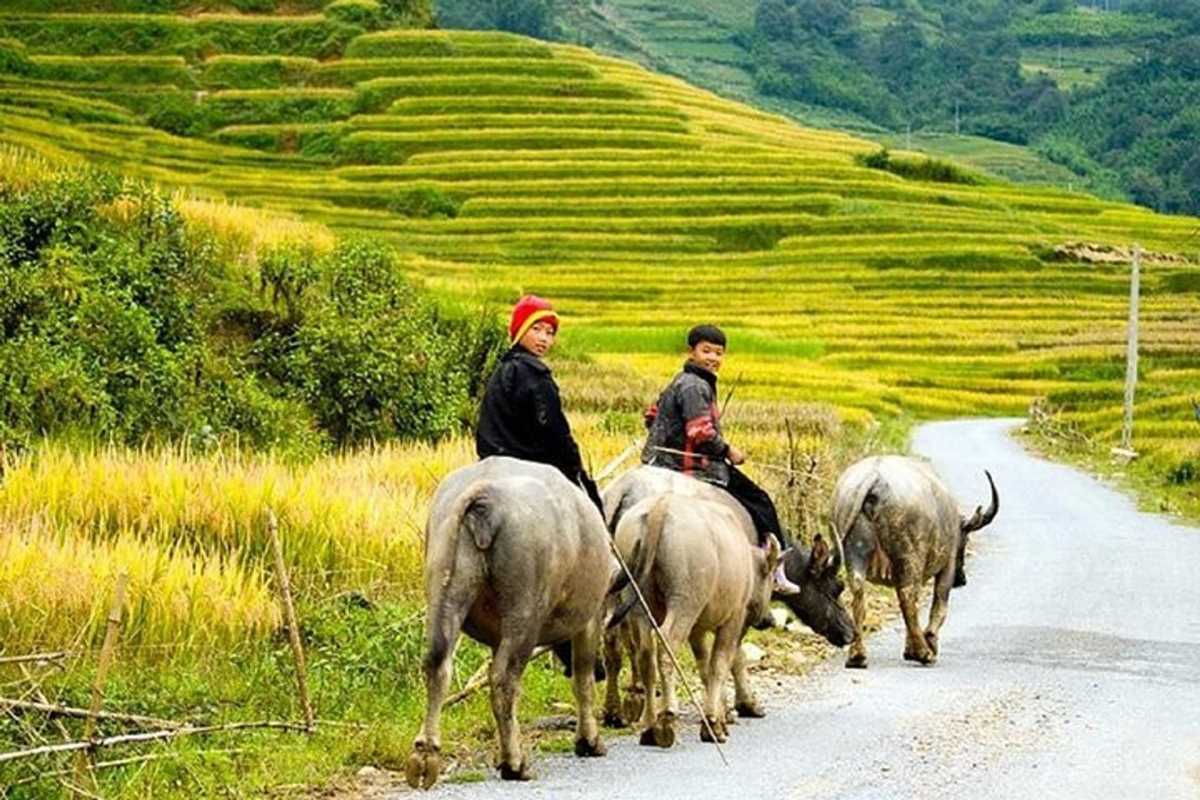
Essential Pre-Trip Planning & FAQs
Before setting off for Y Linh Ho Village Sapa, knowing what to expect makes all the difference. With its remote setting and authentic culture, a little planning goes a long way. Here you’ll find clear, practical answers to the most common questions travelers ask about Y Linh Ho Village Sapa, from accessibility to visas and managing money in the mountains of northern Vietnam. Let these insights guide your early planning and help you feel confident about every step of your journey. If you have more questions or want personal travel support, we’re here to help—so keep reading or reach out anytime for advice.
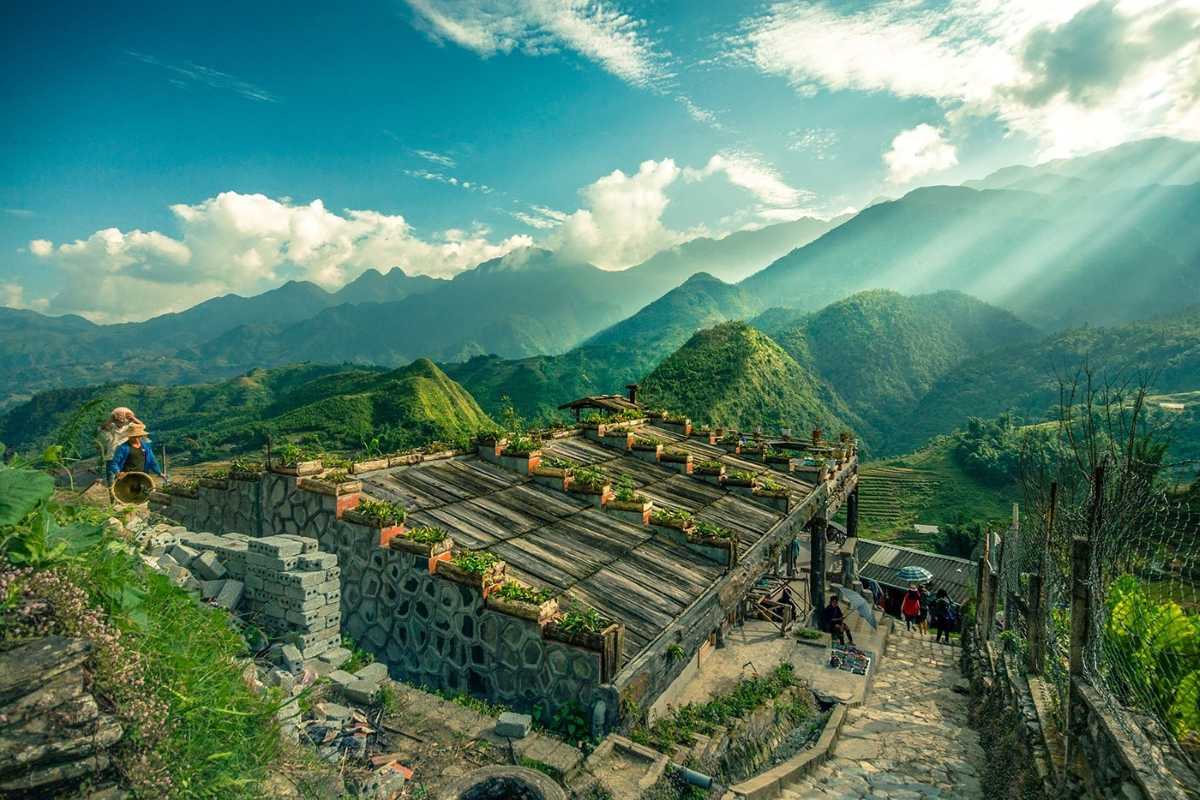
Key Questions Before You Go
Before you finalize your plans to visit Y Linh Ho Village Sapa, it’s natural to have questions about suitability, logistics, and what you’ll need on the ground. Here are some of the most frequently asked questions and straightforward answers to help you prepare for a worry-free adventure. By addressing these points now, you’ll be one step closer to a smooth and memorable trip. If you’re unsure about any detail, just ask us or consult our resources for tailored support.
Is Y Linh Ho Village suitable for all travelers? (e.g., fitness levels, family-friendly)
Y Linh Ho Village welcomes travelers of many backgrounds, but its terrain and style of travel may not suit everyone equally. Consider these factors to decide if it’s a good fit for your group:
- Accessibility: The village is best reached by trekking. Paths can be steep, uneven, and slippery, especially after rain—so Y Linh Ho accessibility may be challenging for those with limited mobility.
- Family suitability: Children who enjoy outdoor adventure will love the freedom of the trails. For very young kids or strollers, paths are not practical.
- Fitness levels for Sapa treks: Treks range from moderate to demanding. Seniors and those with mobility issues should assess their comfort with hilly, rugged terrain.
- Group composition: Solo travelers, couples, and adventurous families are common visitors. Guided tours can help less-experienced trekkers.
- Travel safety: Local guides are highly experienced. Homestays are generally safe and welcoming, but be mindful of your own comfort level with rustic conditions.
If you’re drawn to genuine adventure and don’t mind a bit of a physical challenge, Y Linh Ho Village offers rich rewards. Ask about route options to match your ability, and consider a local guide if you want extra reassurance for your group.
What are the visa requirements for Vietnam?
To enter Vietnam for a trip to Sapa and Y Linh Ho Village, most travelers will need a valid passport and a tourist visa. Here’s what you need to know:
- Vietnam tourist visa: Many nationalities can apply for a 30-day e-visa online (visit the official Vietnam e-visa website for up-to-date details).
- Passport validity: Your passport must be valid for at least 6 months beyond your date of entry.
- Vietnam entry rules: Some nationalities are visa-exempt for short stays; check official lists for your country.
- Visa application: Processing times are typically 3–7 business days for e-visas. Bring a printed copy with you.
- Extensions and overstay: Extensions are possible, but always check the latest regulations as rules can change.
Always check the latest visa requirements for your nationality before booking your trip. For peace of mind, consult your local embassy or the official Vietnam government portal for updates.
Local currency, ATMs, and payment methods in Y Linh Ho Village
Managing money in Y Linh Ho Village requires some advance preparation, as banking and payment services are very limited compared to urban centers. Here’s how to plan:
- Vietnamese Dong: The official currency is VND. Bring enough cash for your stay; change money in Sapa or major cities before arrival.
- ATMs in Y Linh Ho: There are no ATMs in the village. The nearest ATM is in Sapa town, about 5–7 km away.
- Payment methods in Sapa: Homestays, guides, and local shops accept cash only. Credit cards are generally not used in rural areas.
- Travel money tips Sapa: Carry small denominations for easier transactions. Keep cash in a secure, accessible pouch.
- Currency exchange Sapa: Exchange currency in banks or reputable money changers in Sapa or larger Vietnamese cities.
With a bit of planning, handling money in Y Linh Ho Village is simple and stress-free. For larger purchases, arrange payment in Sapa before heading out, and always confirm costs in advance to avoid surprises. If you need extra advice about managing expenses in rural Vietnam, feel free to reach out—we’re happy to help you prepare for a smooth journey.
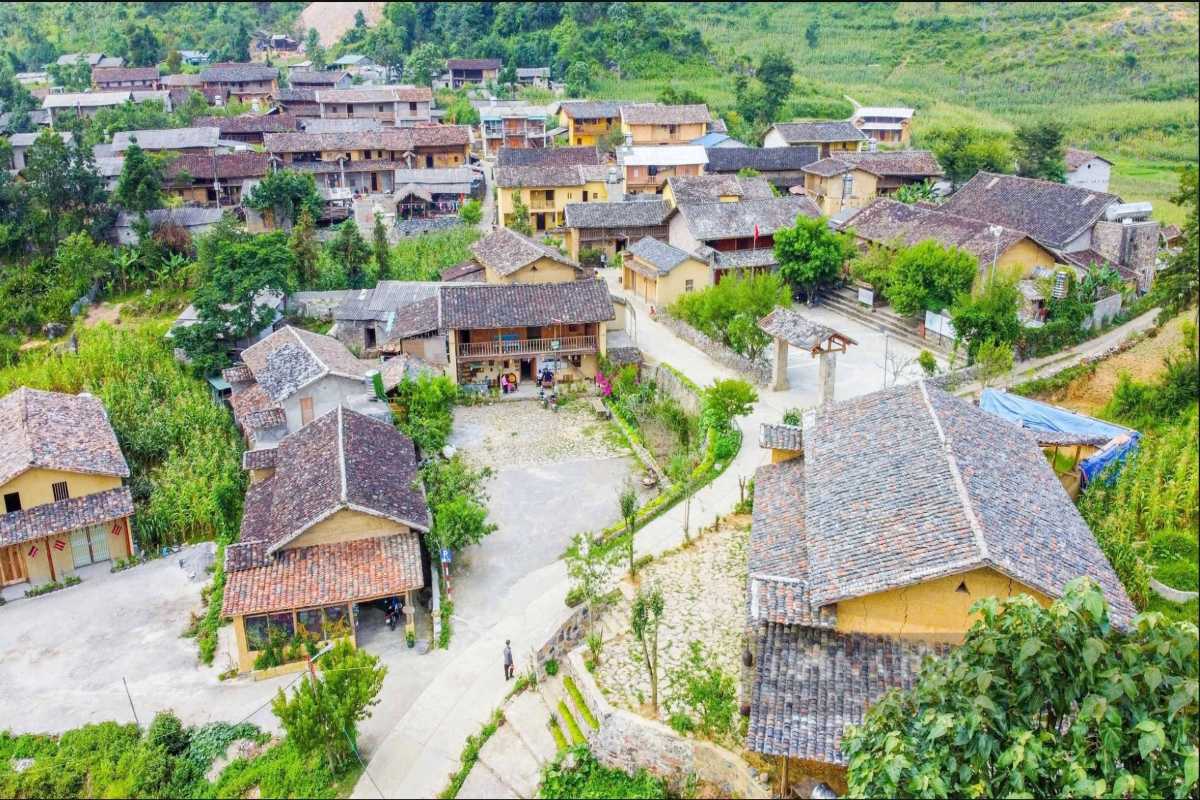
How to Get to Y Linh Ho Village Sapa – Your Journey Starts Here
Figuring out how to get to Y Linh Ho Village Sapa is part of the adventure itself. Whether you’re coming from bustling Hanoi or the vibrant border town of Lao Cai, each step brings you closer to the quiet rhythms and untouched beauty of the mountains. The route is straightforward, but choosing the best way depends on your travel style, time, and budget. Here’s a guide to make your journey practical and stress-free, from city streets to terraced trails. If you ever need advice on Sapa transport or want to book with confidence, Asia Travel Links is here to help you get started.
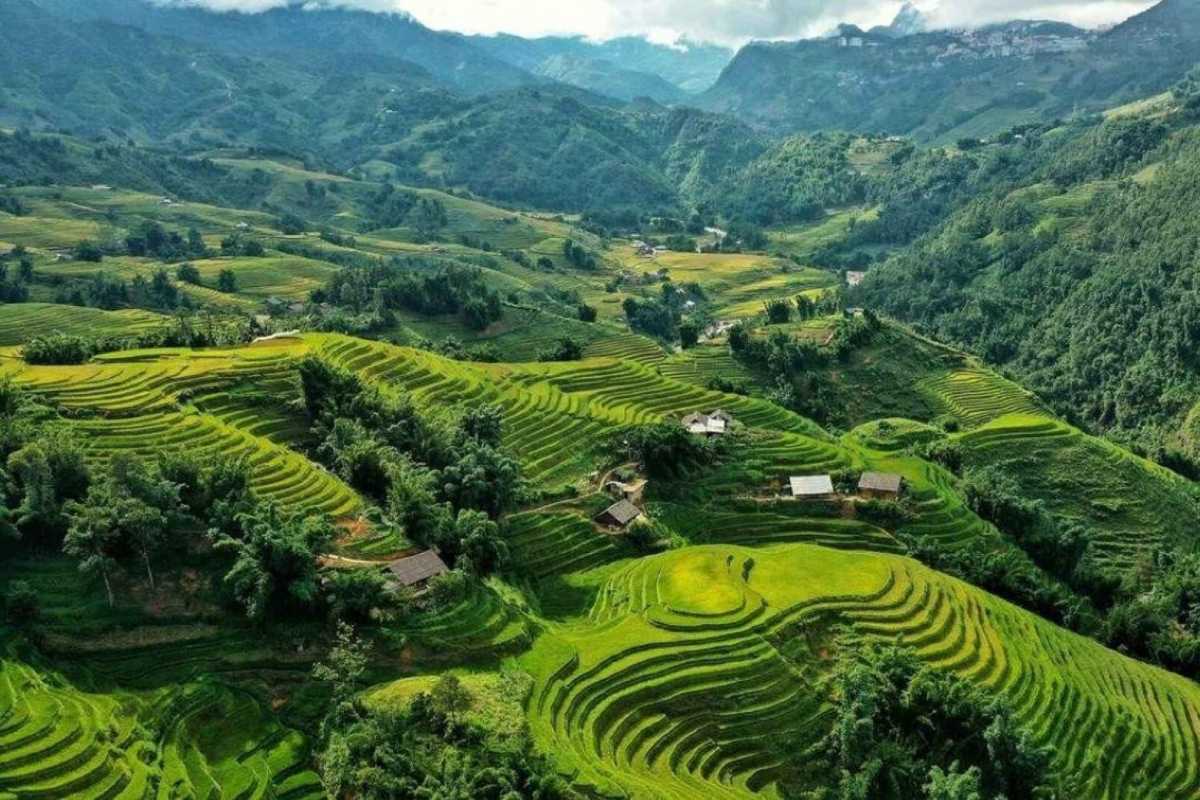
Best Ways to Reach Sapa from Major Cities
Getting to Sapa is the gateway to exploring Y Linh Ho Village Sapa, and you have several options depending on how you like to travel. The most popular ways—train, bus, or private car—each offer their own balance of comfort, cost, and scenic experience. If you’re searching for the best way to reach Sapa, weigh the pros and cons to find what fits you best.
- Train: The classic Hanoi to Sapa train experience. Choose between standard and sleeper trains, with soft or hard berths for overnight comfort. Journey duration is 7–8 hours to Lao Cai, plus a short transfer to Sapa town.
- Bus: Direct buses run from Hanoi to Sapa (luxury buses, sleeper buses, and budget options). Typical journey is 5–6 hours, dropping you right in town. A good choice for those who want less hassle with transfers.
- Private car: Book a private car from Hanoi or Lao Cai for the most flexible and comfortable option. The drive from Hanoi takes 5–6 hours; from Lao Cai just over an hour.
- Sapa transport: All modes are available year-round, but trains and buses can book out fast on weekends and holidays.
- Booking tips: For the train, book tickets in advance (especially for sleeper options). With buses, compare reviews and amenities before booking.
No matter your choice, traveling to Sapa is a scenic journey, winding through misty valleys and mountain passes. If you have questions about route planning, fare comparison, or transfers, our team is happy to help you choose the right fit for your plans.
Train, bus, and private car options from Hanoi and Lao Cai
Reaching Sapa from Hanoi or Lao Cai offers different benefits. Here’s what to expect with each:
- Train (Hanoi to Sapa train): Comfortable and safe, the overnight sleeper train is a favorite for first-timers. Depart from Hanoi in the evening, arrive at Lao Cai early morning, then take a shuttle, taxi, or minibus (about 45 minutes) up the mountain to Sapa town. Standard one-way fares range from $20–$35 for soft sleeper berths.
- Bus (Sapa bus from Hanoi): Direct, fast, and affordable. Departures throughout the day and night, with fares from $12–$18. Choose luxury bus Sapa for more comfort (reclining seats, blankets, snacks). Most drop you at the main bus station or central square.
- Private car Sapa: Ideal for groups or families. Arrange pickup from your hotel in Hanoi or Lao Cai. Expect to pay $110–$150 one-way from Hanoi or $30–$50 from Lao Cai. Flexible stops and door-to-door service.
- Sleeper train: For those who want privacy, book a 2-berth compartment (costlier but quieter).
- Transfer options: All stations and stops offer easy access to taxis or motorbike taxis for the final leg to your hotel or trek starting point.
Compare travel duration, cost, and comfort for each option. Book tickets ahead during peak seasons to avoid disappointment, and always double-check pick-up and drop-off details for smooth transfers. If you’d like help arranging your journey, let Asia Travel Links streamline your bookings.
Travel tips for first-time visitors to Sapa
Arriving in Sapa for the first time is thrilling, but a few simple tips make all the difference:
- Motion sickness Sapa: The mountain roads have many curves—consider medication if you’re sensitive.
- Arrival logistics: Buses and trains drop you at different locations; have your accommodation address ready for a quick taxi or minibus ride.
- Luggage: Pack light and use a backpack. Rolling suitcases are tough on uneven village paths.
- Weather: It can be chilly or rainy even in summer—carry a light jacket and waterproof cover.
- Sapa travel safety: Always keep valuables secure and use official taxis or transfers.
- Station transfers: In Lao Cai, shuttle buses and taxis connect directly to Sapa—confirm the schedule or book ahead during busy periods.
A little preparation smooths the way, making your arrival as rewarding as the journey itself. If you’re unsure about any step or need customized travel tips for Sapa, just ask—our goal is to help you start your adventure with total confidence.
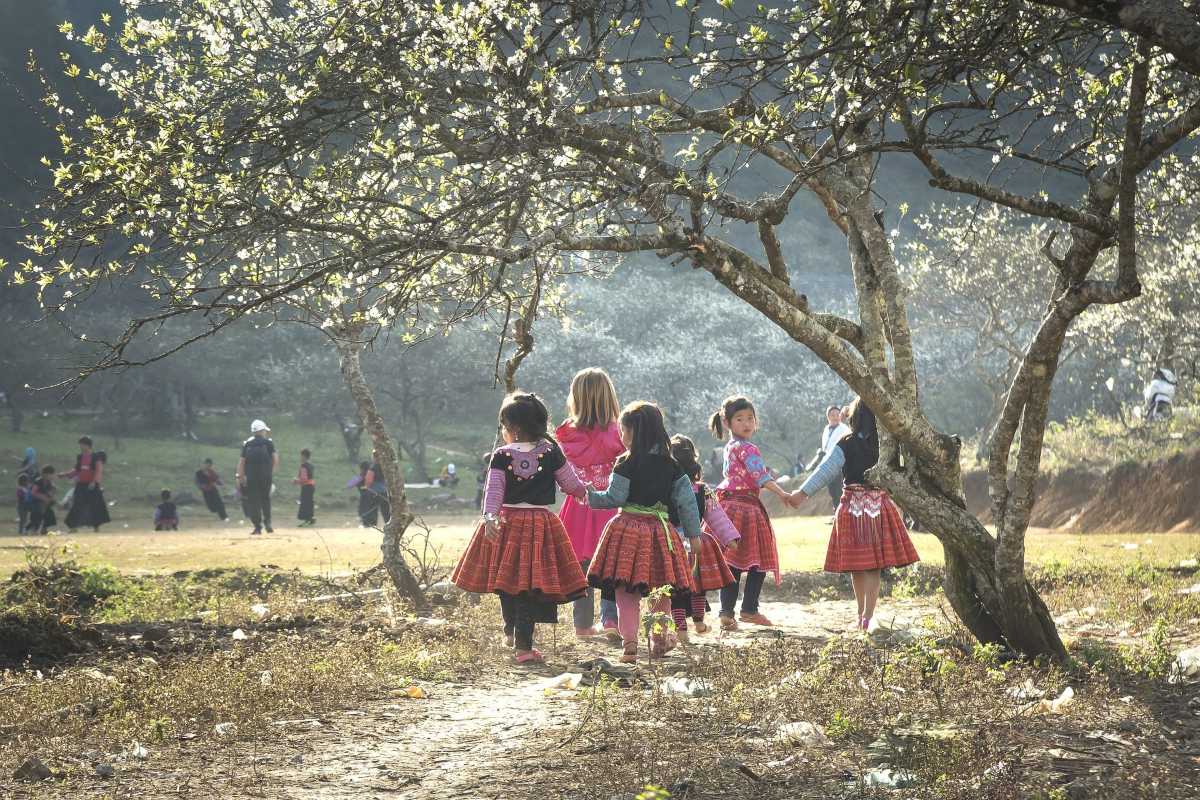
Trekking Routes and Scenic Paths to Y Linh Ho Village
If you’re dreaming of a true mountain adventure, the Sapa to Y Linh Ho trek is the best way to start. Trekking to Y Linh Ho Village is an essential part of the experience, taking you through vibrant rice terraces, misty hills, and remote footpaths that reveal a different side of Sapa. Whether you choose to trek independently or with a local guide, each step immerses you deeper into the rhythms of mountain life. Let’s break down your route options and the highlights that make the journey unforgettable. If you need a Sapa hiking map or want advice on the best trekking route to Y Linh Ho, just ask—there’s a perfect path for every explorer.
Detailed route options: self-guided vs. guided treks
The trek to Y Linh Ho Village can be tailored to your comfort level and interests. Here’s how each approach compares:
- Self-guided trek Y Linh Ho:
- Flexibility: Set your own pace, stop for photos, and linger where you wish.
- Challenge: Requires navigation skills; some trails can be confusing after rain or fog.
- Cost: Cheapest option—no guide fee, but factor in maps and prep time.
- Experience: Greater sense of independence, but fewer cultural insights.
- Guided trek Y Linh Ho Village:
- Local insights: Guides share stories, history, and help you interact with villagers.
- Safety: Guides know the terrain, weather changes, and safe river crossings.
- Ease: All logistics managed—route selection, rest stops, and sometimes lunch.
- Trekking difficulty Sapa: Routes range from moderate (2–3 hours, gentle slopes) to more challenging (4–5 hours, steeper climbs).
Sapa trekking routes cater to all levels, from casual hikers to seasoned trekkers. If you want cultural immersion, safety, and deeper understanding, a local guide is recommended. Either way, prepare for some muddy paths, rewarding views, and genuine accomplishment when you reach the village.
Highlights and must-see viewpoints along the way
The journey to Y Linh Ho Village is filled with visual wonders and cultural gems. Watch for these highlights to make the most of your trek:
- Muong Hoa Valley:
- Expansive vistas of layered rice terraces and winding rivers—unforgettable sunrise and sunset scenes.
- Traditional villages:
- Pass through Hmong and other ethnic minority hamlets; friendly smiles, colorful clothing, and authentic daily life.
- Viewpoints on the way to Y Linh Ho:
- Hidden spots along the trail for panoramic views—ask your guide or look for signposts marked “viewpoint.”
- Rice terraces Sapa:
- Dramatic fields that change color with the seasons—emerald green in spring, golden in autumn.
- Photo tips:
- Early morning and late afternoon light brings out the texture and magic of the landscape. Don’t rush—some of the best shots are unplanned.
With every step, the landscape shifts, offering new perspectives and quiet moments of wonder. The trek to Y Linh Ho Village is about much more than getting from A to B—it’s about the beauty of the journey itself. If you’d like help planning your trek or want a customized hiking experience, Asia Travel Links can match you with the right guide and route for your style.

Entry Fees and Access Essentials
If you’re planning your trek to Y Linh Ho Village, understanding the entry fees and ticketing process will ensure there are no last-minute surprises. Nearly all travelers will encounter at least one checkpoint where a Sapa trekking permit is required—this helps support local communities and maintain the pristine landscape. The process is simple, but you’ll want to be ready with the right cash, understand where to pay, and know what the fee covers. By getting familiar with the entry fees Y Linh Ho Village in advance, you’ll avoid confusion, save time, and focus on enjoying the journey.
Ticketing checkpoints and current fee structures
To enter the Y Linh Ho Village area and most other trekking destinations around Sapa, you’ll pass through ticketing checkpoints. Here’s exactly what to expect:
- Where to pay: Sapa ticket checkpoint booths are located on all main access routes leading from Sapa town into the Muong Hoa Valley region.
- Ticketing Sapa trek: The standard Sapa trekking permit price (as of this writing) ranges from 75,000 to 100,000 VND per person (about $3–$4 USD).
- Payment method: Cash only—bring small bills (VND) for easy transactions.
- Coverage: The fee typically covers access to all villages on the main Muong Hoa trekking circuit, including Y Linh Ho Village, Lao Chai, and Ta Van.
- What you get: An official ticket or wristband—keep this handy for checks at further entry points.
Having the right information about trekking fee structure lets you plan your budget and avoid any surprises at the gate. When you reach the checkpoint, present your cash, collect your ticket, and you’re set to start exploring. If you want updates on current fees or need help arranging tickets in advance, Asia Travel Links is ready to assist.
Practical advice for smooth entry
A few easy steps will make your entry to Y Linh Ho Village quick and stress-free. Here’s what to keep in mind:
- Prepare cash: Small denominations in VND are a must—most checkpoints can’t change large bills.
- Check fee hours: Entry logistics Sapa can change by season; most checkpoints open from 6 am to 6 pm.
- Get an official ticket: Always ask for a ticket or receipt to show at later points—avoid anyone selling tickets away from the main booth.
- Avoiding scams: Only pay at marked checkpoints and beware of unofficial sellers.
- Know what’s covered: Your permit should include all villages in the trekking zone, so keep your ticket handy for re-entry or spot checks.
By following these access tips Y Linh Ho and knowing what to expect, you’ll breeze through the entry process and focus on what matters: the adventure ahead. If you want more personalized Sapa trekking entry advice or need to arrange tickets before you travel, contact Asia Travel Links for up-to-date, traveler-first support.

Immersing Yourself in Village Life – Top Things to Do
Let the true spirit of Y Linh Ho Village Sapa unfold before you—one rich with adventure, discovery, and cultural depth. This is where your journey moves from mere sightseeing to genuine immersion. Whether you’re drawn to sweeping rice terraces, curious about local traditions, or seeking hands-on experiences, you’ll find unforgettable things to do in Y Linh Ho. It’s a place that rewards those who linger, those who wander off the usual trail, and those who crave a real connection with the land and its people. Find your own path through the best village activities Sapa has to offer, and let every moment in Y Linh Ho Village Sapa surprise you.
Plan your visit with an open heart and a spirit of discovery—you’re about to experience the best of Y Linh Ho Village Sapa.

Trekking Experiences through Rice Terraces and Valleys
There’s no better way to get acquainted with Y Linh Ho Village than by trekking right through its breathtaking rice terraces and lush valleys. Trekking in Y Linh Ho Village isn’t just a walk in the countryside—it’s a journey through living history, where every path offers a new perspective and every view has a story. This is the beating heart of Sapa hiking: the chance to walk among rice terrace seasons Sapa is famous for, meet local families, and take in the shifting landscapes with every season. Expect each step to lead you to new discoveries, from secret streams to sun-drenched ridgelines.
Ready to lace up your boots? The beauty and challenge of trekking in Y Linh Ho Village is waiting for you.
Start planning your trek today to see why this is the activity every traveler raves about.
Seasonal changes in the landscape: what to expect
Every season transforms Y Linh Ho Village into a completely new world, and knowing what to expect will help you choose your perfect time to visit.
- Spring/early summer: Terraces come alive in emerald green as planting season begins—perfect for photographers seeking fresh, vibrant shots.
- Late summer/early autumn: Rice ripens to golden hues. This is the best season for Sapa rice terraces—peak beauty and bustling with local activity.
- Winter: Fields are muddy and bare, but the misty mountain backdrop adds a mysterious charm. Trekking conditions may be slippery, so pack sturdy footwear.
- Seasonal landscape Y Linh Ho: Each visit brings a new color palette and mood. Even repeat visitors find something different each season.
- Weather tip: Rainy days (mainly June–August) can make paths tricky—check forecasts before trekking.
No matter when you come, the rice terrace colors Sapa displays are always breathtaking. Each season offers something special to experience and photograph.
If you want more help choosing the best time for trekking Sapa, reach out to Asia Travel Links for advice and tailored planning tips.
Best times of day for photography and views
Photographers and early risers will find that Y Linh Ho Village offers a feast for the eyes, especially during the golden hours of sunrise and sunset. For those in search of the best photo spots in Sapa, timing is everything.
- Sunrise Sapa: Arrive before dawn to catch the valleys filling with soft, golden mist. The terraces reflect light beautifully, creating surreal landscapes.
- Sunset over rice terraces: As the sun dips, the fields glow with deep amber tones—ideal for wide, panoramic views.
- Midday: Good for detail shots of village life and portraits with vibrant backgrounds, though light is harsher.
- Top locations: Try the footbridges above the valley, bends in the river path, or any high vantage overlooking both the village and rice fields.
- Panoramic views: Early evening, just before sunset, gives warm light across the terraces—a photographer’s dream.
These photo opportunities are everywhere if you know where and when to look. Don’t forget to pause and simply enjoy the view—sometimes the best shot is the one you take with your own eyes.
For detailed, up-to-date tips on timing and shooting locations, Asia Travel Links is happy to help you plan the perfect photography trek.

Homestays and Staying with Local Families
There’s no better way to experience Y Linh Ho Village than by staying right in the heart of the community. A Y Linh Ho village homestay opens the door to true cultural immersion, far beyond what a standard hotel or guesthouse in Sapa could ever offer. Here, you’re not just a visitor—you become a temporary member of a local family. Expect warm welcomes, shared meals, and the unique rhythm of rural life that makes every stay personal and unforgettable. This is the kind of Sapa accommodation that leaves you with new friendships, stories, and a deeper respect for the traditions of the village.
If you crave genuine connection and a chance to slow down and see daily life up close, Y Linh Ho Village homestays deliver a truly meaningful experience.
Choosing the right homestay: tips for authentic experiences
Not all homestays are created equal—finding the most authentic stay in Y Linh Ho Village is about asking the right questions and looking for the small details that show you’re welcomed as a guest, not just a customer.
- Research host family backgrounds: Look for homestays that highlight real family involvement and are known for warm, attentive hospitality.
- Ask about shared meals: The best authentic homestay Sapa options serve family-style meals where you eat with your hosts, not just alongside them.
- Find out about daily routines: An immersive homestay encourages participation in household or farming routines, even if just observing.
- Cultural immersion Sapa: Ask about language, customs, and what traditions you might be invited to share—such as helping with cooking or learning local crafts.
- Check independent reviews: Seek feedback that mentions real, meaningful interactions and respect for local ways rather than a purely commercial set-up.
Choosing a homestay in Y Linh Ho Village is all about connection—don’t hesitate to contact Asia Travel Links for a curated list of trusted family hosts and tips for booking an experience that feels truly local.
Sample daily routines and traditional meals
Wondering what your day will look like during a homestay in Y Linh Ho Village? Here’s a taste of what to expect when you share the rhythms and flavors of village life.
- Early morning: Wake to the gentle sounds of farm animals or children playing; help with light chores or stroll through misty rice fields.
- Communal dining: Breakfasts are often simple—freshly cooked rice, eggs, or noodle soup—shared around a low table.
- Daytime routines: Join in on farm or household activities, relax with your hosts, or wander the village to meet neighbors and learn local crafts.
- Traditional meals in Sapa homestay: Dinners are communal affairs, featuring regional dishes such as grilled meats, steamed greens, sticky rice, and maybe a taste of homemade rice wine.
- Evening gatherings: The day often ends with stories, music, or laughter around a small fire—true village hospitality at its best.
You’ll find that every day in Y Linh Ho Village offers a new lesson in patience, simplicity, and togetherness. Meals and routines are less about the clock and more about sharing life, side by side.
If you’re eager to savor the true flavor of Sapa cuisine and village routines, let Asia Travel Links recommend homestays that specialize in authentic, family-style experiences.

Learning Black Hmong Handicrafts and Traditions
Engaging with the Black Hmong community in Y Linh Ho Village unlocks some of the most rewarding, hands-on travel experiences you’ll find in Sapa. A Hmong handicraft workshop Sapa is not just an activity—it’s an invitation to sit beside village artisans, hear the stories behind each pattern, and leave with skills (and souvenirs) you can’t get anywhere else. The scent of indigo, the warmth of handwoven cloth, and the rhythm of expert fingers bring local traditions alive in a way that’s unforgettable. These workshops let you dive deeper into artisan crafts Sapa, moving far beyond surface sightseeing into the heart of village culture. If you’re looking to connect meaningfully with the people of Y Linh Ho Village, don’t miss this chance to learn by doing.
Workshops on batik, embroidery, and indigo dyeing
The Black Hmong women are famous for their batik, embroidery, and indigo dyeing—skills passed down through generations and central to their identity.
- Batik workshop Y Linh Ho: Try your hand at drawing beeswax designs on cotton, then dipping your creation into rich, natural indigo vats—each pattern tells a story.
- Learn embroidery in Sapa: Pick up a needle and learn how to stitch bold, symbolic patterns that decorate traditional Black Hmong clothing.
- Indigo dyeing Sapa: Watch or help as bundles of cloth emerge from deep blue dye pots, then dry in the sun, taking on the colors of the valley itself.
- Sapa cultural workshops: Sessions are small, informal, and often held at the home of a master artisan—expect personal instruction and plenty of encouragement.
- Textile patterns: You’ll gain an appreciation for the artistry and meaning woven into every thread.
Taking part in these hands-on experiences gives you new respect for Black Hmong tradition—and a deeper connection to Y Linh Ho Village. If you want to book a spot in a workshop, Asia Travel Links can help you arrange an authentic session directly with village artisans.
Opportunities to purchase genuine local crafts
Supporting the Black Hmong community means choosing carefully when you buy handmade souvenirs in Y Linh Ho Village and Sapa.
- Buy handmade crafts Y Linh Ho: Look for women weaving, embroidering, or dyeing cloth on their porches; buying direct means your money goes straight to the maker.
- Authentic souvenirs Sapa: Seek unique pieces—scarves, bags, or wall hangings—where patterns are slightly irregular, colors vary, and you can feel the handmade texture.
- Artisan crafts Sapa: Ask questions about the origins of an item; real artisans are proud to share their process.
- Genuine village products Sapa: Markets are tempting, but for true authenticity, buy from someone you meet during a workshop or homestay visit.
- Community benefit: Every purchase supports local families, helps preserve cultural heritage, and encourages younger generations to continue traditional skills.
If you’re unsure, Asia Travel Links can connect you with trusted local sellers and offer tips for distinguishing genuine Black Hmong work from mass-market imitations.
Responsible Souvenir Shopping
Ethical shopping in Y Linh Ho Village and Sapa isn’t just good for the soul—it ensures fair rewards for hard-working Black Hmong artisans and gives you a more meaningful memento to take home.
- Fair price: Pay what you know is reasonable for hours of skilled work, not a bargain-basement rate.
- Responsible shopping Sapa: Ask before snapping photos of artisans or their goods, and show appreciation for their craft.
- Ethical shopping Sapa: Prefer one-of-a-kind, handmade items over cheap, factory-made souvenirs, even if it means buying less.
- Sustainable tourism Sapa: Bring cash in small denominations to make purchases easier for sellers and avoid credit card dependency.
- Bargaining tips: Negotiate respectfully if appropriate, but don’t drive prices unreasonably low—remember, a little more means a lot to local families.
Respect, curiosity, and gratitude will always be appreciated. If you want further advice on making your visit to Y Linh Ho Village both ethical and unforgettable, reach out to Asia Travel Links for personalized guidance.
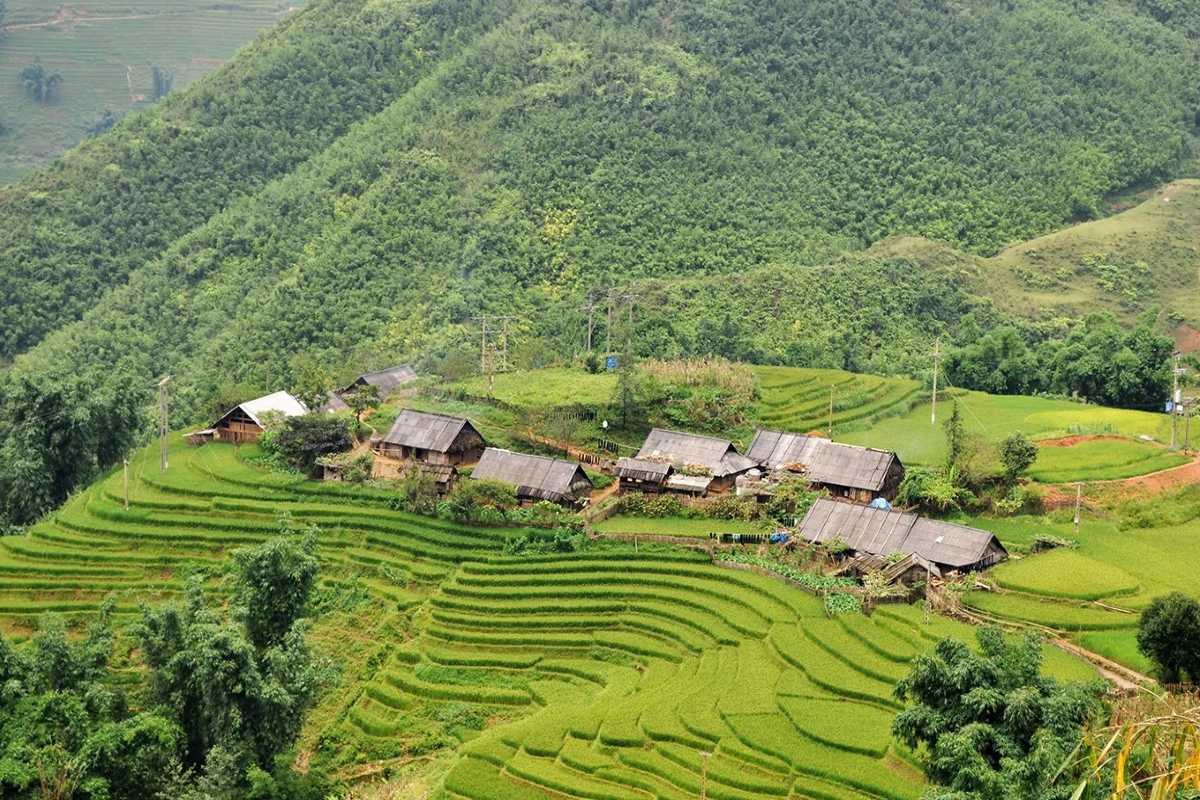
Local Cuisine and Dining Experiences
If you’re drawn to the flavors of a place as much as its sights, Y Linh Ho Village in Sapa promises some of the most memorable dining moments in northern Vietnam. Every meal is an invitation into local life. The best food in Sapa village isn’t found in fancy restaurants but in the kitchens of homestays, where generations cook together and every dish reflects centuries of tradition. Here, Sapa cuisine is more than fuel—it’s a bridge to the rhythms of the land, the warmth of community, and the adventure of trying something completely new.
Curious eaters will be rewarded with hearty, home-style recipes, mountain vegetables picked at sunrise, and a genuine sense of hospitality you won’t soon forget. Bring an open mind, a big appetite, and don’t be surprised if you’re invited to help stir the pot or toast with homemade rice wine.
Whether you’re a dedicated foodie or just want to sample a different side of Y Linh Ho Village, make time for shared meals and you’ll discover a new world of taste. Ready to dig in? Let Asia Travel Links help you find the homestays and experiences that put food—and connection—at the center of your journey.
Must-try Y Linh Ho dishes and ingredients
Nothing brings you closer to the heart of Y Linh Ho Village than its food. Here’s what to savor:
- Thang co Sapa: A rich, aromatic stew made with horse meat, offal, and local herbs—a staple for special occasions and adventurous palates.
- Com lam Sapa: Sticky rice steamed inside bamboo tubes, lending a subtle, earthy flavor and irresistible texture.
- Grilled mountain pork: Marinated in native spices, then grilled over an open fire for deep, smoky notes.
- Foraged vegetables and wild greens: Dishes feature morning-harvested greens, bright and fresh from surrounding hills.
- Local corn and pumpkin soup: Simple, nourishing, and perfect for cooler evenings in the valley.
From the unmistakable aroma of wood-fired cooking to the vivid color of garden vegetables, village specialties here speak of the land and its people. Don’t miss the chance to sample as many flavors as you can—each bite tells a story. For help arranging a culinary-focused stay, Asia Travel Links is happy to guide you.
Dining etiquette and communal eating
Mealtime in Y Linh Ho Village is more than just food—it’s about belonging. Here’s what to know to make every meal more meaningful:
- Serve elders first: Elders are honored at the table, so always offer food and drink to them before serving yourself.
- Dining etiquette in Y Linh Ho: Expect to sit on floor mats or low stools, sharing large platters rather than individual plates.
- Eating customs Sapa: Take small portions at first—return for seconds as invited to show respect for the host’s generosity.
- Rice wine toasts: Clinking small cups of homemade rice wine is a ritual for celebration, gratitude, or simply welcoming guests.
- Food sharing: Don’t be shy—communal platters are the norm, so try a little of everything.
A few mindful gestures—like waiting your turn or trying every dish—show gratitude and will earn you genuine smiles from your hosts. For more local tips on Sapa’s unique food culture, just ask Asia Travel Links. You’ll return home with stories, recipes, and maybe even a new favorite dish.
Linh's Culinary Journey: A Taste of Y Linh Ho's Hmong Delicacies
Most food guides simply list dishes, but my recent culinary adventure into Y Linh Ho Village wasn't just about what I ate; it was a vibrant, deeply personal immersion into the heart of Hmong culture, a storytelling through scent and spice that felt utterly unique. It was a journey far removed from any restaurant meal, inviting me into the very soul of the community.
Stepping into my homestay in Y Linh Ho, a sense of quiet anticipation settled over me. The air was cool and crisp, carrying the earthy scent of damp soil and the distant, comforting aroma of woodsmoke. My host, a kind Hmong woman with a gentle smile and nimble hands, gestured towards the simple, open-air kitchen. My expectations of "village food" were humble, perhaps a few basic stir-fries, but what unfolded over the next few hours was a revelation. The sun dipped below the terraced hills, casting long shadows as the soft glow of a single bulb illuminated the preparations. The rhythmic chopping of fresh greens on a worn wooden board, the sizzle of oil in a wok, and the quiet chatter of the family preparing the evening meal instantly drew me in. It wasn't just cooking; it was a communal ritual.
The first dish to emerge, thang co, wasn't what I'd expected – a rich, aromatic stew, traditionally made with horse meat, but tonight with local pork. The initial hesitation quickly gave way to curiosity. The broth was incredibly complex, simmering for hours with herbs I couldn't identify, giving off a warm, slightly gamey, and deeply savory aroma. My host encouraged me with a smile to try a spoonful. The taste was robust, earthy, and surprisingly comforting – a true taste of the mountains. Then came the com lam, sticky rice cooked perfectly inside bamboo tubes. Breaking open the charred bamboo, the rice emerged, fragrant and slightly smoky, a perfect cylinder. Its texture was incredibly satisfying – firm yet chewy, with a subtle sweetness from the bamboo. I learned to peel back the inner membrane, revealing the pristine white grains.
The culinary journey in Y Linh Ho truly deepened when we gathered around the low table. Eating communally, sharing dishes with the family, felt incredibly authentic. There was a dish of stir-fried wild greens, foraged from the surrounding hills, vibrant green and surprisingly peppery. Another was a simple but flavorful grilled pork, marinated in local spices that lingered pleasantly on the tongue. We dipped everything into a fiery chili sauce, freshly pounded with garlic and a hint of lime, providing a kick that complemented every bite. The meal was punctuated by small cups of homemade rice wine, offered with generous smiles and clinks, a symbol of welcome and shared joy. There were moments of quiet appreciation, punctuated by laughter and shared gestures, as we navigated the language barrier with ease. I felt not just like a guest, but like part of the family, truly eating with locals. The unexpected challenge? Getting used to the intense heat of the chili sauce – a delicious but formidable opponent!
This isn't just a Sapa food culture experience; it's a lesson in resourcefulness, tradition, and profound hospitality. The food tells the story of the land and its people. My main takeaway from this culinary journey in Y Linh Ho is that the simplest ingredients, prepared with care and tradition, can create the most memorable and soul-satisfying meals.
Actionable Practical Takeaways:
- Go with an Open Mind: Be adventurous with your palate. Some dishes might be unfamiliar, but they are incredibly authentic and part of the cultural experience.
- Embrace Communal Eating: Don't hesitate to share from the common dishes. It's a fundamental part of Hmong hospitality.
- Learn a Few Phrases: Simple greetings like "Chào bạn" (hello friend) or "Cảm ơn" (thank you) can go a long way in enhancing interaction at mealtime.
- Bring Small Gifts (Optional): If staying at a homestay, small, practical gifts (like school supplies for children or basic medicines for the family) are deeply appreciated, but never expected.
- Ask About Ingredients: If curious, politely ask your hosts about the ingredients or preparation methods. They're often happy to share.
- Manage Cash: Ensure you have enough Vietnamese Dong, as card payments are not an option in the village.
This experience wasn't just about filling my stomach; it was about nourishing my soul and connecting with a culture in the most delicious and intimate way. It truly felt like unlocking a secret chapter of Y Linh Ho.
Recommendation: If you're seeking a deeply authentic and personally enriching encounter with Vietnamese culture, you absolutely must experience a homestay and share a meal in Y Linh Ho Village. It's more than just food; it's a heartfelt invitation into a way of life, an unforgettable Hmong food experience Sapa offers, and a true highlight of any trip to the region. Go, taste, and connect!
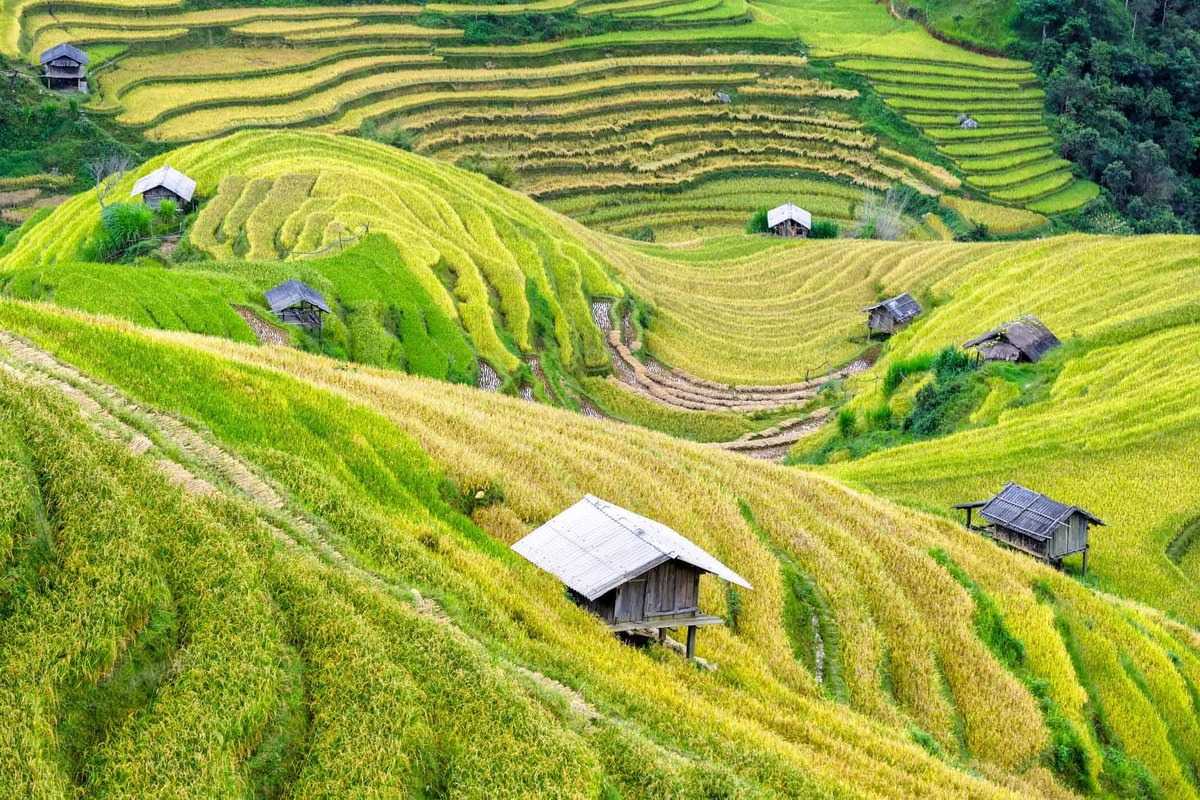
Best Photo Opportunities and Tips
If you want to capture the spirit of Y Linh Ho Village and bring home photos that truly tell its story, this part of your journey is essential. The best photo spots in Y Linh Ho aren’t just about sweeping views, but about pausing, observing, and immersing yourself in the moment. Whether you’re drawn to dawn over misty rice terraces, portraits of welcoming locals, or the tiny details of village life, this is where your camera—and your curiosity—will find inspiration.
Sapa photo tips go beyond the technical. In this remote landscape, patience, timing, and sensitivity matter most. Wander slowly, follow the light, and be open to unscripted scenes. For photographers of every level, Sapa and Y Linh Ho Village offer new lessons with every step. The memories you capture here will be some of your most meaningful.
Looking to plan your shooting route or need advice on respectful portrait photography? Asia Travel Links can connect you with local guides who know all the hidden angles and stories.
Iconic viewpoints and hidden gems for stunning shots
In Y Linh Ho Village, every path reveals a frame-worthy scene. Here are top spots for unforgettable images:
- Iconic viewpoints Y Linh Ho: The classic rice terrace overlook just before you enter the village—best for panoramic shots at sunrise or sunset.
- Hidden gems for photos Sapa: Down by the river, quiet bends in the trail offer tranquil water reflections and misty morning light.
- Village center: Capture daily life and candid portraits in the communal heart of the village, but always ask before photographing people.
- Terrace panorama: Take the narrow footpath above the main village for a sweeping view of layered rice fields and winding streams.
- Local homestay courtyards: Document rustic stilt houses, drying herbs, and family moments against a backdrop of green hills.
Exploring with your camera is half the adventure—wander off the main path for the richest photo rewards. If you want tailored recommendations or a photo-focused trek, Asia Travel Links is here to help.
Photography etiquette and respectful capturing of moments
Taking photos in Y Linh Ho Village means honoring both your subjects and their traditions. Here’s how to make every shot meaningful and respectful:
- Always ask permission before photographing people—especially elders or children.
- Photography etiquette Sapa: Be discreet with your camera, and never interrupt daily routines or ceremonies for a shot.
- Local portrait photography: Share photos with your subjects if possible, and show gratitude for their trust.
- Respect privacy: Some families may decline to be photographed—respect their wishes and thank them for their time.
- Capture candid moments without intrusion—sometimes the best images are those observed from a quiet distance.
By following a few simple guidelines, you’ll not only take better photos, but build genuine connections with the people of Y Linh Ho Village. For more ethical travel Sapa tips or help arranging a portrait session, just reach out to Asia Travel Links. Your photos will reflect not just what you saw, but the respect you brought with you.
Chloe's Lens: Capturing the Soul of Y Linh Ho
Forget the postcards; the true essence of Y Linh Ho Village isn't found in a perfectly curated gallery, but in the challenging, breathtaking, and often spontaneous moments you capture through your own lens. My journey as a photographer here wasn't just about snapping pictures; it was about truly seeing, feeling, and intimately engaging with a landscape and a people that whisper ancient stories. Unlike highly manicured tourist spots, Y Linh Ho demands you work for its beauty, rewarding you with unparalleled authenticity.
My adventure began with the morning mist, a painter's stroke across the terraced fields. The initial challenge was immediate: the ever-shifting light. One moment, the sun would burst through, illuminating the vibrant emerald of the rice paddies, the next, a soft shroud of mist would descend, transforming the landscape into an ethereal, muted painting. This required constant adjustments, a dance between aperture and shutter speed. I remember trekking through muddy paths, camera gear carefully protected in my waterproof backpack, the sights of water buffalo grazing peacefully below and the sounds of distant cowbells echoing through the valley. My initial expectation was to find classic, sweeping landscapes, but Y Linh Ho quickly taught me that its true soul lay in its details and its people.
One particularly memorable moment was during golden hour, just as the sun dipped behind the western ridges. The light bathed the village in a warm, honeyed glow, igniting the golds and oranges of the ripening rice. It was then that I spotted an elderly Hmong woman, her face a roadmap of wisdom and resilience, sitting outside her stilt house, meticulously embroidering. Approaching her, I offered a respectful smile and a simple "Chào bà" (hello, grandmother). With a gentle nod and a warm, crinkling smile, she assented to a photograph. Her hands, weathered by a lifetime of work, moved with such grace. This candid moment, the texture of her traditional indigo fabric, the soft light illuminating her focused expression – it was pure magic. This wasn't just a portrait; it was a connection, a quiet understanding that transcended words, and it truly highlighted the importance of connecting with subjects respectfully.
The mud after a sudden downpour, the steep inclines, the challenge of protecting my gear from unexpected humidity – these were all part of the experience. But they were also opportunities. The way the light filtered through the low clouds, creating dramatic shadows, or the reflections of the sky in the flooded paddies after rain, offered unique photographic angles. I learned that patience was my greatest lens, waiting for the authentic moment rather than forcing a shot. The sheer joy I felt when reviewing an image that truly captured the quiet dignity of a farmer, or the vibrant energy of children playing amongst the houses, was immense. This wasn't just another landscape; it was a living, breathing tapestry, and capturing it felt like a profound privilege. My photographer's story Y Linh Ho is one of unexpected beauty and genuine human connection.
Actionable Practical Takeaways (Chloe’s Travel Photo Tips Sapa):
- Protect Your Gear: Sapa’s weather is unpredictable. Invest in waterproof bags, rain covers for your camera, and plenty of silica gel packs.
- Embrace All Light: Don't just chase golden hour. Misty mornings offer ethereal, soft light, and midday sun can create dramatic contrasts (though often harsh for portraits).
- Respectful Portraits: Always ask for permission before photographing people, especially children and elders. A simple gesture and a smile often suffice. Be prepared for a "no," and respect it.
- Look Beyond the Obvious: While rice terraces are stunning, seek out details: the intricate patterns of Hmong embroidery, the textures of wooden houses, the expressions on faces, the simple tools of daily life.
- Wide-Angle & Telephoto: A wide-angle lens (e.g., 16-35mm) is excellent for sweeping landscapes and capturing the vastness of the terraces. A telephoto (e.g., 70-200mm) helps isolate subjects and compress distant elements.
- Stabilize: For low light or long exposures (like misty mornings), a lightweight tripod or monopod is invaluable.
Capturing Y Linh Ho Village through my lens wasn't just a trip; it was a masterclass in seeing the world, and an unforgettable chapter in my photographic journey. Every click was a conversation, every frame a memory etched deep within me.
Recommendation: For any photographer, amateur or pro, seeking authentic beauty and a genuine challenge, Y Linh Ho Village is an unparalleled destination. It’s one of the best photo spots Sapa has to offer, not just for its scenery, but for the profound human stories waiting to be told. Bring your camera, but more importantly, bring your open heart and a willingness to truly connect. You won't just take pictures; you'll capture the very soul of the place.
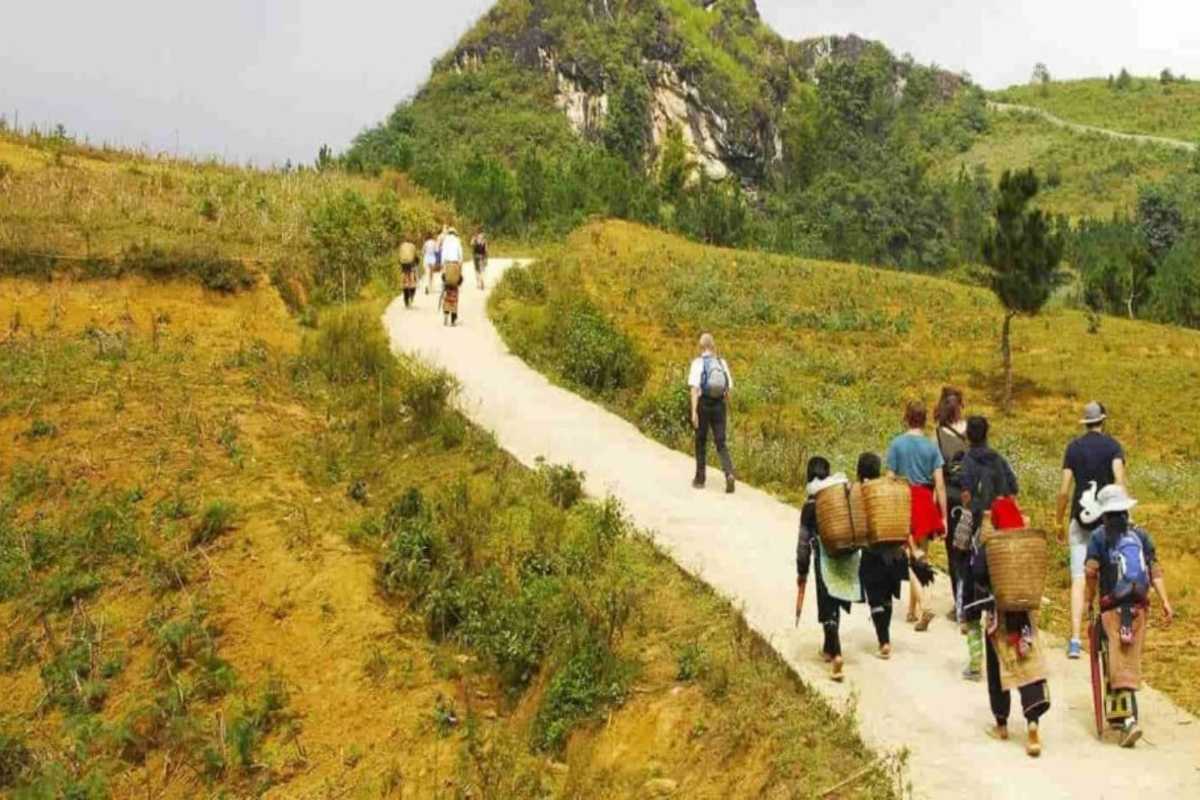
Exploring the Surroundings – Nearby Villages and Nature
Venture beyond Y Linh Ho Village Sapa and you'll uncover a tapestry of authentic communities, breathtaking nature walks, and unforgettable day trips just waiting to be explored. This region isn’t just a single destination—it’s a network of interconnected valleys, each with its own rhythm, culture, and hidden gems. The best way to maximize your time is to build a flexible itinerary that includes nearby villages and the lush scenery of the Muong Hoa Valley.
Whether you crave more immersive cultural experiences or simply want to soak up diverse landscapes, these surrounding villages and nature spots let you personalize your adventure. If you need help mapping out routes or arranging multi-village treks, the local experts at Asia Travel Links can offer tailored guidance for every travel style.
Take the next step—expand your journey beyond Y Linh Ho Village Sapa for a deeper, richer Sapa experience.
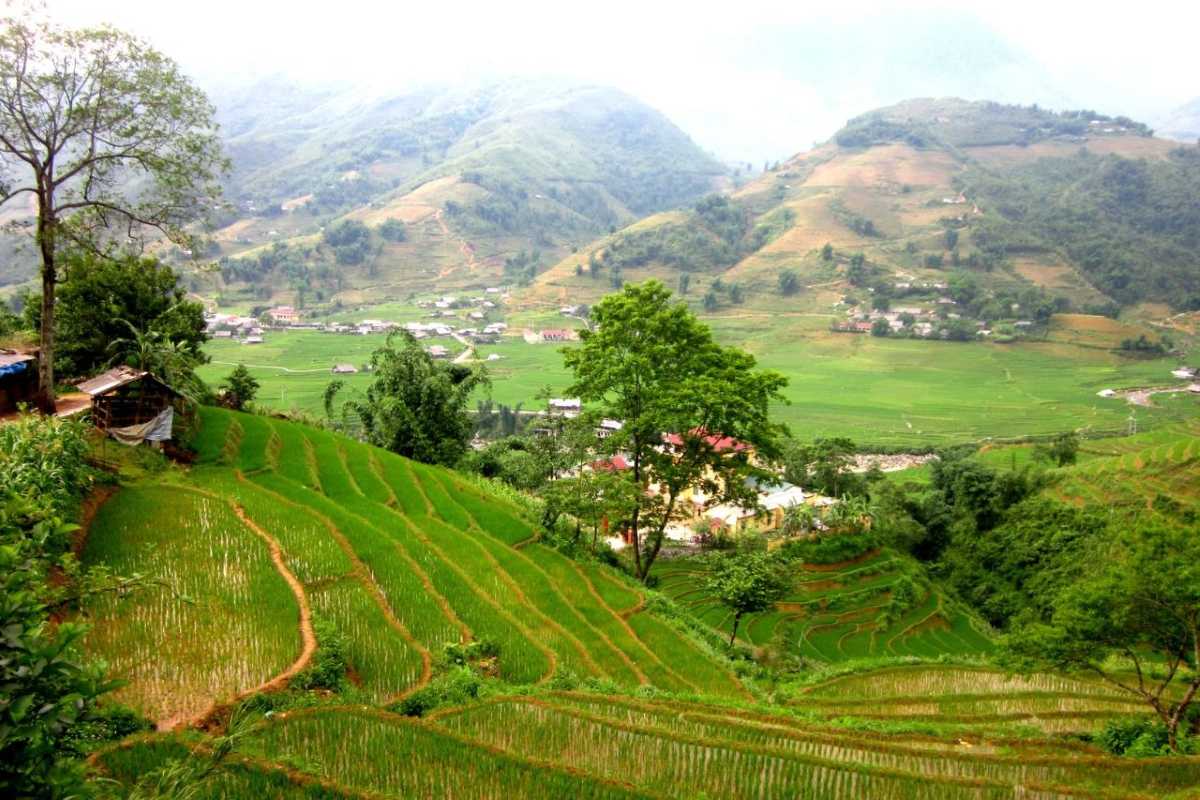
Lao Chai, Ta Van, and Other Hidden Gems in Muong Hoa Valley
Muong Hoa Valley is home to some of the most compelling stops in the area, offering a patchwork of cultures, scenery, and activities that bring your trek to life. It’s the beating heart of Sapa’s ethnic villages, where each settlement adds a new story to your journey. You'll find Lao Chai village bustling with craft shops and diverse communities, while Ta Van is known for its welcoming Giay families and central role as a homestay hub.
Many travelers combine these stops into a single or multi-day trek, taking in new sights and faces at every turn. Each village brings its own flavor and energy—some lively, some peaceful, all undeniably memorable. With insider tips and a bit of planning, you’ll discover hidden gems Sapa is famous for, far from the main tourist crowds.
Connect your route to include the best of Muong Hoa Valley and make every step count. If you want route recommendations or help coordinating a custom trek, Asia Travel Links is ready to support your plan.
Unique features of each neighboring village
To help you decide where to go next, here are the highlights that set each village apart:
- Lao Chai: Home to several ethnic groups, famous for craft shops in Lao Chai and a lively local market vibe.
- Ta Van: Known as a homestay hub Ta Van with its warm Giay community and laid-back, welcoming energy.
- Y Linh Ho Village: Quieter, more traditional, offering a peaceful, authentic atmosphere with fewer tourists.
- Muong Hoa Valley: Scenic heart of the region, filled with ethnic diversity and prime trekking landscapes.
- Other villages: Each stop in the valley features unique villages near Sapa, with opportunities for local crafts, food, and photography.
Each village is a world of its own—pair several together for an even more dynamic trip. To find which is right for your interests, ask Asia Travel Links for up-to-date suggestions based on your travel style.
Suggested day-trip itineraries from Y Linh Ho
Make the most of your time by following one of these tried-and-true day-trip itineraries from Y Linh Ho Village:
- Classic loop: Start at Y Linh Ho Village, walk to Lao Chai, then continue to Ta Van for lunch and cultural exchanges—return by the same route or via scenic detours.
- Adventure route: Take the high trail from Y Linh Ho to Muong Hoa Valley route, with stops for panoramic photos and short visits to ethnic homestays along the way.
- Village-to-village trek: Link up Sapa hiking map routes that connect all three villages and return by local transport if you’re short on time.
Each plan covers key trekking distances, estimated walking times, and highlights suggested activities for your day. Want a tailored plan, maps, or guide? Asia Travel Links can create a custom route to fit your pace and interests.

Waterfalls, Rivers, and Scenic Spots Worth Visiting
Sapa is blessed with natural beauty, and the areas around Y Linh Ho Village are no exception. If you’re drawn to lush riversides, cascading waterfalls, and tranquil forest nooks, this is your chance to immerse yourself in the best of northern Vietnam’s outdoors. The valley is threaded with walking paths that lead to hidden gems—some celebrated, some known mostly to local families. With the right planning, you can fill your days with the sound of rushing water, fresh mountain air, and the soothing quiet of untouched nature. For recommendations tailored to your interests, ask Asia Travel Links for the latest local insights or map suggestions.
Best natural attractions within easy reach
With so many choices nearby, here are some of the most accessible and rewarding natural spots around Y Linh Ho Village:
- Muong Hoa River: Just steps from the village, the riverbank is perfect for a peaceful stroll, picnic, or forest walk along the water.
- Silver Waterfall: One of the best waterfalls near Sapa, easy to reach by local transport, and spectacular after heavy rain.
- Love Waterfall: Another Sapa nature attraction, it’s an easy walk and a popular spot for photos or quiet relaxation.
- Local forest trails: Connect Y Linh Ho Village with tranquil escapes through shaded woodlands—great for birdwatching and calm, scenic exploration.
- Picnic spots Muong Hoa: Along the river or in grassy meadows, ideal for a midday break during longer walks.
Each of these locations offers a different slice of Sapa’s wild beauty. Pick one or two for an easy add-on to your village experience, or ask a local guide for directions to their favorite nature spots.
Insider tips on less-crowded spots
Want to enjoy these wonders without the crowds? Locals know a few tricks for savoring Sapa’s landscapes in peace:
- Arrive early: The riverbanks and forest trails near Y Linh Ho Village are at their quietest just after sunrise.
- Explore hidden trails near Y Linh Ho that wind behind terraced fields—off the beaten path Sapa for true tranquility.
- Visit waterfalls on weekdays or outside peak holiday periods for a more private, relaxed experience.
- Ask villagers for their favorite picnic or riverbank spots; these often offer the best timing for a quiet break.
- Seek out secret spots Muong Hoa Valley—many aren’t marked on tourist maps but are safe and open for visitors willing to explore.
Embrace the less-traveled paths for a more personal, peaceful connection with Sapa’s natural beauty. If you want help finding the perfect quiet corner, Asia Travel Links can share up-to-date advice and hidden gems.
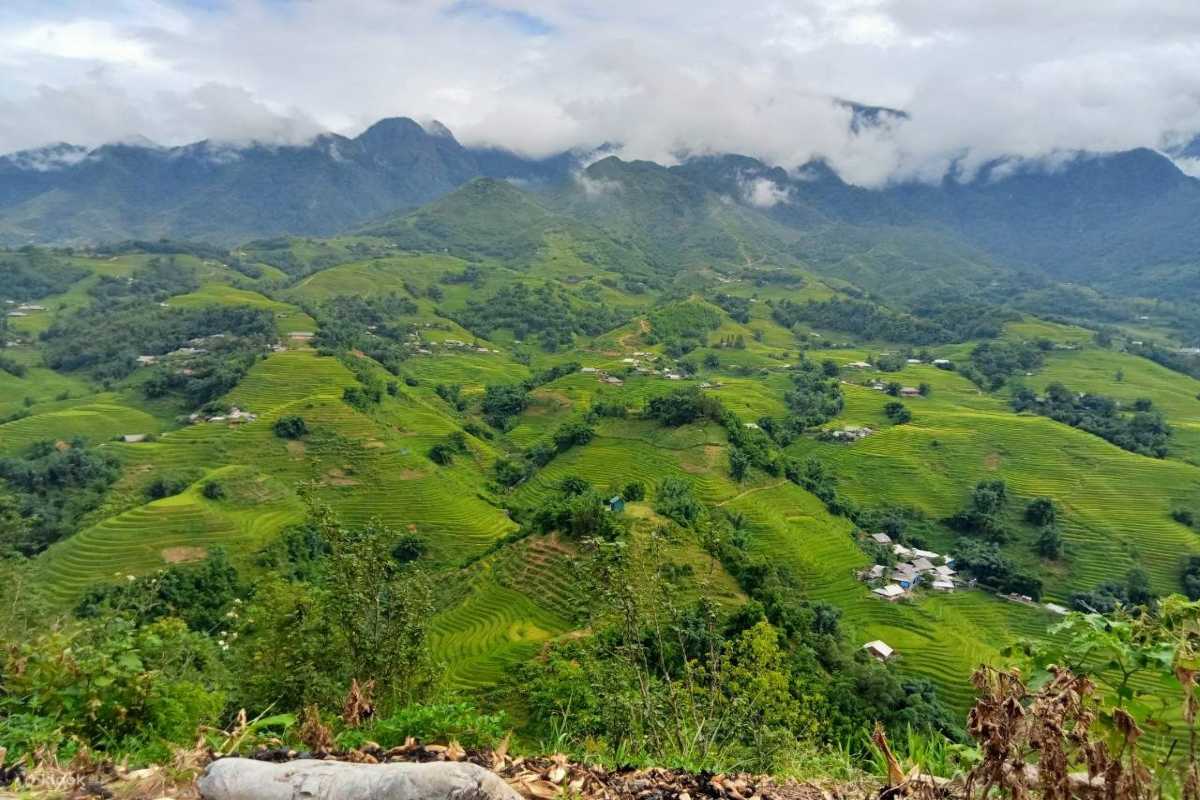
Multi-Day Treks and Adventure Extensions
Sapa isn’t just a base for gentle walks—this region is also the starting point for some of Vietnam’s most ambitious trekking adventures. For those craving more than a day’s exploration, multi-day trek Sapa routes and adventure extensions like a trek to Fansipan or deeper expeditions into the Sapa highlands offer unparalleled challenge and reward. These journeys demand preparation, physical fitness, and the right mindset. Plan ahead for permits, route choices, and guides, and you’ll unlock a side of the region few ever see. For those ready to push their limits, Asia Travel Links can provide updated maps, recommended local trekking guides, and real-time safety info for adventure tours Sapa.
Planning a route to Fansipan or deeper into Sapa’s highlands
For serious trekkers, planning a route to Fansipan or a multi-day Sapa highlands trek starts with honest self-assessment and logistical preparation. These treks are not for beginners, with steep elevation, unpredictable weather, and the need for permits and local guide Fansipan expertise.
- Fitness and experience: Ensure you are physically fit, with multi-day trek experience and stamina for long, steep climbs.
- Permits and local support: All Fansipan trekking routes require permits and are safest with a local guide for navigation and weather updates.
- Route options: Choose from classic routes like Tram Ton Pass (the “easy” route) or longer, more challenging trails through thick forest.
- Timing and weather: Plan for spring or autumn for the best conditions and check the forecast daily.
- Adventure tour Sapa: Consider a packaged tour for permits, logistics, and emergency support.
A safe, unforgettable ascent of Fansipan demands respect for the mountain and careful advance planning.
What to pack for longer treks
Heading into the wild around Sapa means being ready for anything. Use this packing list for Sapa trek adventures to stay safe, comfortable, and prepared for all conditions:
- Layered clothing: Weather can swing from hot sun to cold rain in a single day, so pack base layers, fleece, and a rain jacket.
- Waterproof gear: A reliable raincoat and waterproof backpack cover are essentials.
- Sturdy boots: Proper, broken-in hiking boots are a must for rugged, often slippery trails.
- Sleeping bag: Bring a quality sleeping bag for overnight treks—temperatures can drop quickly at altitude.
- Navigation tools: GPS device or map and compass (especially for self-guided or less popular routes).
- Sapa trekking essentials: First-aid kit, sun protection, water purification tablets, high-energy snacks, and a headlamp.
Pack smart, double-check your gear, and enjoy the freedom of the Sapa highlands. Need last-minute gear or expert advice? Asia Travel Links can assist with rentals and pre-trip checklists.

Cultural Insights and Responsible Travel
Visiting Y Linh Ho Village Sapa isn’t just a sightseeing journey—it’s a chance to engage in meaningful cultural exchange and practice responsible travel Sapa. As you explore the daily rhythms of the Black Hmong community, your choices matter: how you interact, what you support, and the respect you bring can shape the future of this remarkable place. Embrace Sapa cultural festivals and sustainable tourism Sapa practices to help preserve both tradition and the environment for generations to come. Authentic experiences here depend on understanding local etiquette, traditions, and the impact of eco-friendly travel decisions. Start with small gestures and open eyes; every visitor helps keep the story of Y Linh Ho Village alive. If you’re eager for expert advice or want to book an ethical local guide Sapa, Asia Travel Links can help you plan a trip that truly makes a difference.
Join us in making your adventure both unforgettable and responsible—email us or visit Asia Travel Links for tips and support.
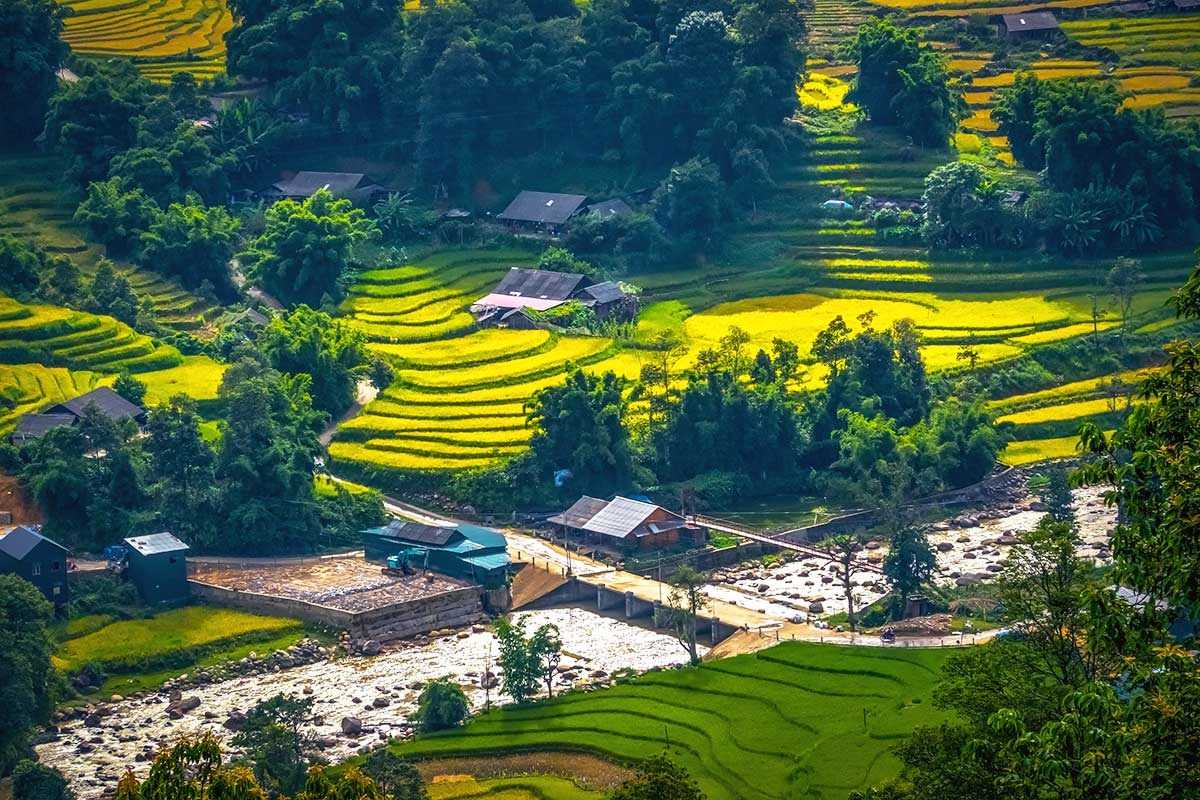
Understanding Black Hmong Customs and Festivals
Cultural connection in Y Linh Ho Village starts with honoring the time-tested customs and lively festivals of the Black Hmong. These moments—from daily greetings to once-a-year Sapa New Year festivals—offer travelers rare opportunities for genuine engagement and learning. When you participate, even as an observer, you become part of a living tradition, building bridges and showing deep respect for the local way of life. Familiarize yourself with Hmong etiquette, recognize the importance of respectful conduct, and you’ll find doors opening to experiences few travelers ever have. The following insights will guide you in festival participation and everyday encounters.
If you want to discover the true heart of Sapa cultural events and learn how to join responsibly, reach out for our updated festival calendar and etiquette guide.
Major annual events and how to participate respectfully
The most memorable experiences in Black Hmong culture often center on major annual events. Understanding what these festivals mean—and how to participate respectfully—makes your visit richer for everyone.
- Hmong New Year: The biggest celebration of the year, marked by vibrant costumes, traditional games, and family reunions. Always ask before taking photos, and dress modestly.
- Sapa harvest festival: A lively, communal thanksgiving for the rice harvest. Visitors are often welcomed but should follow the lead of locals and avoid disrupting rituals.
- Ancestor honoring ceremonies: Witnessing these spiritual gatherings requires quiet respect—participate only when invited, and refrain from photography.
- Local sports and games: Traditional activities, such as top-spinning or tug-of-war, are inclusive but observe first before joining in.
Participate in Sapa festivals by listening more than talking, showing appreciation, and accepting hospitality with gratitude. These simple acts of respectful behavior will open hearts and deepen your understanding.
Be sure to check upcoming event dates and ask your host family for guidance on festival customs before joining in.
Everyday traditions and etiquette for visitors
To truly connect with the Black Hmong in Sapa, practicing daily etiquette is as important as joining a festival. Small gestures of cultural respect go a long way in building mutual trust and friendship.
- Greeting customs: A simple nod or smile is often returned warmly. Avoid direct hugs or handshakes unless invited.
- Gift giving: If bringing a small present, such as school supplies or fruit, offer it with both hands and avoid extravagant items.
- Home entry: Always remove your shoes before entering a home, and ask permission before sitting or taking photos indoors.
- Eating with locals: Wait for the host to invite you to eat, and try every dish as a sign of appreciation.
- Cultural sensitivities Sapa: Refrain from touching children’s heads, and show respect by listening more than speaking.
Practicing these respectful travel Sapa tips ensures a genuine, warm welcome and fosters a positive impression of visitors for the whole community.
Whenever in doubt, watch how elders behave and follow their example. For more detailed do’s and don’ts, connect with Asia Travel Links.
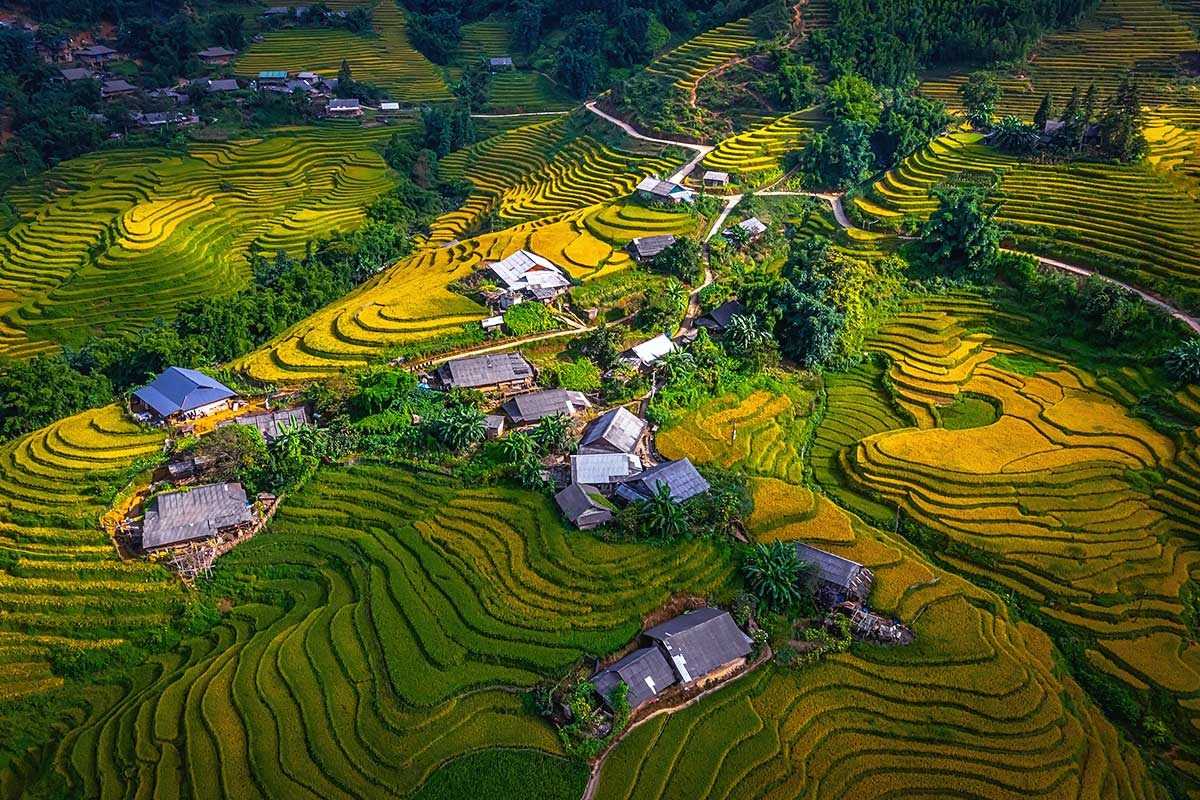
Sustainable Tourism and Community Initiatives
Every traveler visiting Y Linh Ho Village Sapa has the power to leave a lasting, positive mark. Sustainable tourism Sapa isn’t just a buzzword here—it’s a philosophy woven into daily life, with travelers and locals working hand in hand to preserve the area’s culture and environment. By choosing community tourism initiatives, respecting local customs, and supporting ethical travel Sapa, you become part of the solution. Small choices—like opting for a fair trade souvenir or staying at a family-run homestay—directly empower village residents and ensure that your experience creates community benefit. As you explore, look for opportunities to participate in projects that support local culture or village empowerment Sapa, and remember: responsible travel tips Sapa can make your journey more rewarding for everyone involved.
If you’re eager to make your visit meaningful, reach out for advice or local introductions through Asia Travel Links.
How tourism is helping preserve village culture
Y Linh Ho Village Sapa is living proof that thoughtful tourism can be a force for good. When visitors spend money locally, join workshops, or buy crafts directly from artisans, their contribution extends far beyond the moment.
- Cultural funding: Fees from guided walks and workshops help pay for festivals, communal repairs, and language preservation.
- Reviving traditional crafts: Your interest in weaving or dyeing workshops supports the survival of ancient skills.
- Women’s empowerment: Many homestays and shops are owned by local women, who reinvest earnings in their families and education.
- Supporting traditional crafts: Direct purchases enable families to keep practicing and passing on their crafts.
- Community benefit Sapa: Projects like village clean-ups, school supply drives, or health clinics are often sponsored by ethical travelers.
The positive tourism impact on Sapa culture is tangible—every ethical choice supports cultural funding, empowerment, and long-term economic benefit for the community.
Ask your guide or host about projects you can support or how to participate in cultural preservation efforts during your stay.
Responsible travel tips and what to avoid
Traveling responsibly in Y Linh Ho Village Sapa means making choices that uplift both people and place. Keep these responsible travel tips Sapa in mind for a positive experience:
- Avoid trash: Always pack out what you bring in—littering harms the landscape and the community.
- Stick to trails: Walking off-path can damage crops and contribute to erosion; follow marked routes and respect private land.
- Respect privacy: Don’t photograph people or homes without permission, and honor requests for no photos.
- Avoid giving money to children: This can encourage begging and disrupt education; consider donating to community programs instead.
- Eco-friendly travel Sapa: Use reusable bottles, minimize plastic, and choose accommodations that follow green practices.
What to avoid in Sapa is simple—focus on positive, sustainable actions and ethical travel do’s and don’ts. Your choices help protect the culture, environment, and hospitality of Y Linh Ho Village Sapa for the future.
Need more tips? Our Asia Travel Links team is here to help you plan a visit that benefits everyone.

Conservation and Environmental Awareness
Muong Hoa Valley stands as a remarkable symbol of harmony between people and nature, where conservation projects Sapa are not just initiatives, but a shared way of life. Environmental awareness in Sapa has grown steadily, thanks to both community efforts and mindful travelers choosing eco-friendly tours Sapa. Every visitor who learns about local eco-initiatives or supports preservation efforts helps protect the delicate balance of the landscape. In Y Linh Ho Village, you’ll find real examples of Sapa nature protection—from river clean-ups to tree-planting drives. By traveling with awareness and engaging with community-led programs, you become part of a movement that values both the valley’s breathtaking beauty and its cultural legacy.
If you want your visit to make a difference, reach out to Asia Travel Links for eco-friendly travel advice or opportunities to participate in local projects.
Local efforts to protect nature and heritage
Locals in Muong Hoa Valley have taken active steps to preserve their homeland’s stunning scenery and traditions. Their work is rooted in heritage conservation Sapa and makes a visible impact.
- Community-led projects Sapa: Villagers regularly organize clean-up events along trails and streams to keep the valley pristine.
- Heritage conservation Sapa: Collaborative programs help restore and maintain historic homes, rice terraces, and cultural sites.
- Eco-projects: Initiatives like tree-planting days, erosion control, and sustainable farming techniques reduce environmental stress.
- Environment awareness Sapa: Local schools teach children the value of nature and encourage stewardship from an early age.
Visitors who witness these efforts feel inspired to contribute to preservation and support the ongoing work of these community-led projects.
Ask your homestay host or guide about upcoming eco-projects or volunteer opportunities during your trip.
How travelers can contribute positively
Every visitor to Muong Hoa Valley has an opportunity to support conservation and leave a positive legacy. Here are simple, effective ways to contribute:
- Join clean-ups: Participate in valley or river clean-ups, often organized by homestay hosts or community leaders.
- Support eco-businesses: Choose accommodations, guides, and tour operators committed to sustainability.
- Advocate for sustainable actions Sapa: Use refillable bottles, avoid single-use plastics, and educate fellow travelers.
- Support local conservation: Donate to or volunteer with projects that restore trails, plant trees, or protect wildlife.
- Choose a responsible guide: Hire guides who are trained in environmental practices and share conservation values.
By taking part in these activities, you help preserve what makes Muong Hoa Valley and Y Linh Ho Village special for generations to come.
Interested in contributing? Let Asia Travel Links connect you with local initiatives or eco-friendly tours for your visit.

Connecting with Locals: Beyond the Homestay
A visit to Y Linh Ho Village is so much richer when you step beyond your homestay and engage in genuine cultural exchange in Sapa. The most rewarding village experience Sapa has to offer isn’t just seen or photographed—it’s felt in the warmth of shared meals, spontaneous laughter, and the honest moments when language is replaced by understanding. Locals are proud of their home and delighted when travelers take real interest. By being present, open, and curious, you unlock a world of meaningful moments and new friendships.
To make your journey unforgettable, actively seek ways to connect with locals Y Linh Ho through small, sincere acts. The human stories you collect will be your most cherished souvenirs.
Opportunities for genuine cultural exchange
Opportunities to truly connect with the people of Y Linh Ho Village are everywhere if you look for them. Here’s how to participate:
- Help on the farm Y Linh Ho: Offer a hand with planting, harvesting, or daily chores when invited—locals appreciate your effort and curiosity.
- Learn Hmong phrases: Even a few simple words of greeting in the local language go a long way in breaking the ice and showing respect.
- Share stories: Bring photos or small tokens from your home country and trade stories about family, weather, or food.
- Attend local market: Visit Sapa’s markets with a host for a true taste of village commerce, color, and conversation.
- Join community activities Sapa: Participate in evening gatherings, singing, or simple games for a joyful, communal experience.
Engaging in these activities allows you to move from observer to participant, leaving you with richer memories and genuine connections.
If you’re seeking deeper involvement, ask your host or Asia Travel Links for opportunities to join in on community activities.
Building bridges: small gestures that make a difference
Sometimes, the smallest gestures can create the strongest bonds in Y Linh Ho Village. These actions speak volumes about your intentions and leave lasting impressions:
- Thoughtful gifts Y Linh Ho: School supplies, notebooks, or simple medicines are genuinely valued—avoid giving sweets or cash directly to children.
- Smile and show gratitude: A sincere smile and a heartfelt thank you in the local language are always appreciated.
- Shared interests: Offer to share a skill or hobby—music, drawing, or a simple game can transcend language.
- Write a thank-you note: Leaving a brief message of appreciation for your host shows lasting respect and affection.
- Connect with locals Sapa: Take time to listen as much as you talk, making every interaction a true exchange.
These small acts help bridge cultures and transform your visit into a meaningful experience for everyone involved.
Remember, every gesture of kindness and gratitude strengthens the human connection and helps make your time in Y Linh Ho Village unforgettable—for you and your hosts alike. If you’d like tips on meaningful gifts or ways to contribute, ask Asia Travel Links for personalized suggestions.
Marcus's Moments: Bridging Cultures in Y Linh Ho
Many travelers seek out destinations to see things, but my truest desire in Y Linh Ho Village was to connect. I'd read countless guides about the rice terraces and trekking, but few spoke to the profound human exchange that awaited. This wasn't about being a mere observer; it was about opening myself up to a different way of life, bridging gaps not just of language, but of worldview, and ultimately, finding a shared humanity. It was an experience that redefined my understanding of travel.
My initial days in Y Linh Ho were a mix of awe and a quiet sense of being an outsider. The beauty was undeniable – the vibrant greens of the rice paddies shimmered under the afternoon sun, and the rhythm of village life was captivating. I’d nod and smile at the Black Hmong people I passed, but the interactions often felt fleeting. I desperately wanted to go beyond the transactional wave, to truly understand. My turning point came one afternoon, sitting on the porch of my homestay. My host, a kind woman named Mai, was meticulously sorting freshly harvested corn. With hesitant gestures and a few broken English words mixed with my even more broken Vietnamese, I asked if I could help. She laughed, a warm, genuine sound, and showed me how to peel the husks. The simple, repetitive task, done side-by-side, felt like a quiet conversation. The smell of the earth, the rustle of the corn husks, and Mai’s occasional, soft humming filled the air. This small, shared moment felt more profound than any grand vista.
Later, one evening, a spontaneous invitation materialized. The family was gathering, and through a series of gestures and repeated words, I understood they wanted me to join them in a round of ruou ngo (corn wine). The plastic cups clinked, laughter echoed, and stories were shared – mostly through animated gestures and Mai's son, who knew a few more English words. I found myself learning basic Hmong phrases, mimicking their intonation, and watching their reactions. When I managed to say "Cảm ơn" (thank you) with genuine sincerity, Mai’s eyes lit up. I also learned a powerful lesson in humility – my initial assumptions about how best to "connect" were often too grand. It wasn't about grand gestures, but about showing genuine interest in their daily lives. One morning, I joined their trek to collect firewood. The physical effort was surprising, but the sense of camaraderie, the shared purpose, was invigorating. This simple act reinforced that Marcus's experience Y Linh Ho was about participation, not just observation.
This journey taught me that bridging cultures in Sapa doesn't require a formal workshop or perfect language skills. It demands patience, keen observation, and an open, willing heart. It's about respecting their pace, their traditions, and their space. The most meaningful exchanges came from unexpected moments – sharing a cup of tea, helping with a small chore, or simply sitting in comfortable silence. These tiny "Marcus's moments" transformed my trip into something truly extraordinary, revealing a beautiful, shared humanity beneath our differing customs.
Actionable Practical Takeaways:
- Learn Basic Greetings: "Chào bạn" (hello friend), "Cảm ơn" (thank you), and "Xin lỗi" (excuse me/sorry) go a long way.
- Observe and Mirror: Pay attention to local customs (e.g., taking off shoes before entering, accepting tea with both hands) and try to respectfully follow suit.
- Show Genuine Interest: Ask about their daily lives, crafts, or farming (with your guide's help if needed). Show, don't just tell, your curiosity.
- Offer to Help (If Appropriate): If you see your host family doing a simple chore (like shucking corn or preparing vegetables), politely ask if you can assist.
- Bring Small, Thoughtful Gifts: Non-perishable items like school supplies for children, simple first-aid items, or tea for the family are appreciated more than money. Avoid sweets.
- Be Patient with Language Barriers: Use gestures, a translation app, or your guide as a bridge. A smile and good intent often transcend words.
- Embrace the Unscripted: The most memorable cultural exchanges often happen spontaneously, outside of planned activities. Be open to these moments.
My time in Y Linh Ho wasn't just a trip; it was a profound lesson in connection. It’s an integral travel lesson Sapa gifted me, proving that the deepest insights come from opening your heart to others.
Recommendation: If your travel goal is to genuinely connect with local culture and people, beyond the tourist facade, Y Linh Ho Village is an absolute must. Be prepared to step outside your comfort zone, engage with an open heart, and allow the community to welcome you. These authentic Marcus's moments are truly unforgettable, offering a rich tapestry of shared humanity that will stay with you long after you leave.

What to Avoid: Common Tourist Traps and Misconceptions
Traveling through Sapa can be transformative, but it’s important to steer clear of common pitfalls that catch many visitors off guard. While the allure of Y Linh Ho Village and the region’s beauty is genuine, not every experience offered is equally authentic or worthwhile. By understanding the tourist traps in Sapa and learning how to spot aggressive selling Sapa tactics, you’ll enjoy a more rewarding and truthful journey.
Knowing what to avoid gives you the freedom to focus on real connections, meaningful discovery, and authentic experiences in Sapa.
Differentiating authentic experiences from tourist-oriented setups
Not every “local” experience in Sapa is created equal. To ensure you find genuine moments, look for these signs:
- Real guides Sapa: Choose guides recommended by your host or a reputable company—look for deep local knowledge, not just good English.
- Ask about true cultural exchange: Authentic hosts will encourage participation in family activities, not just passive observation.
- Avoid commercialized Sapa: Be wary of “shows” or events that feel staged, or souvenirs that look identical in every shop.
- Look for genuine local experience: Seek out businesses that are family-run, and where the profits clearly support the local community.
- Trust your instincts: If something feels too polished or pushy, it probably isn’t truly local.
Remember, the most memorable moments usually come from small-scale, unscripted interactions in Y Linh Ho Village and its surroundings.
If you’re uncertain, ask Asia Travel Links or your homestay host for trusted recommendations to ensure real value and meaningful encounters.
Common scams or aggressive selling tactics to be aware of
Unfortunately, even in beautiful Sapa, scams and persistent selling can happen. Protect yourself with these tips:
- Avoid scams in Sapa: Be cautious with unsolicited offers of tours or transport at bus stations or on the street—verify with your accommodation before booking.
- Persistent selling Sapa: Politely but firmly decline offers you don’t want by smiling and saying “no thank you,” then moving on.
- Recognize aggressive vendors Sapa: Don’t feel pressured by pushy sellers; it’s okay to say no multiple times.
- Scam warning: Watch for inflated prices on “exclusive” handicrafts—check a few shops before buying.
- Use polite refusal: Phrases like “I’d like to think about it” or “maybe later” are understood and respected.
- Seek trusted recommendations: Book guides and activities through your host, Asia Travel Links, or well-reviewed agencies for peace of mind.
A little awareness and assertiveness will help you avoid most issues, letting you focus on discovering the best of Sapa at your own pace.
If you ever feel unsure, reach out to Asia Travel Links for advice or local support—they’re here to help make your adventure safe and authentic.
David's Discovery: Navigating Misconceptions in Sapa
When I first envisioned my trip to Sapa, I pictured pristine rice terraces and serene encounters with local tribes. The reality, at least initially, was a surprising mix of beauty and persistent hawking, especially in Sapa town. My goal for visiting Y Linh Ho Village was to escape the commercial bustle and find that authentic experience. But even there, I quickly realized that navigating cultural nuances and avoiding common tourist misconceptions Sapa presents would be key to a truly rewarding journey. This wasn't just about finding the right trail; it was about finding the right mindset and strategy.
My first few hours in Sapa town were a whirlwind of eager Hmong women following me, offering tours and handicrafts. While their entrepreneurial spirit was admirable, the sheer persistence felt overwhelming. I politely declined, using the few Vietnamese phrases I knew, but found it difficult to shake them off. This experience led me to a critical realization: while the desire for authentic interaction was strong, I needed to approach it differently. My initial assumption was that all unsolicited approaches were genuine invitations; I learned quickly to differentiate. When I finally set off for Y Linh Ho, I was determined to manage expectations and seek out genuine connections, not just fleeting transactions.
The trek down to Y Linh Ho offered a welcome respite from the town's intensity. The air grew cleaner, the sounds of motorbikes faded, replaced by the rustle of leaves and distant bird calls. However, even here, children would sometimes approach, offering small bracelets. It was tempting to buy them out of kindness, but I'd read that this can inadvertently encourage begging rather than supporting sustainable practices. This was a moment where my research paid off. Instead of buying, I'd engage them briefly with a smile, maybe ask their name (if they spoke a little English), and politely decline, sometimes offering a simple "Cảm ơn, nhưng không" (Thank you, but no). I realized that the true richness came from observing village life unfold naturally, not from a forced interaction. My most profound moments came from simply watching farmers tend their fields, or seeing children play freely, unprompted. It was about allowing authenticity to simply be, rather than trying to buy it. This was a critical part of my personal experience Sapa taught me.
One key discovery was the value of finding a truly trusted local guide through my homestay, rather than someone from town. This local insight was invaluable. My guide, a young woman from Y Linh Ho, helped me understand the subtle cues, the appropriate body language, and even a few more polite phrases that allowed for more meaningful, less transactional, interactions. She taught me about the community-run initiatives that truly benefited the village, guiding me to buy crafts directly from the artisans’ homes rather than from roadside stalls, ensuring the money went directly to the creators. This proactive approach to finding trusted local guides transformed my experience.
My journey through Y Linh Ho taught me that navigating the complexities of tourism in a culturally rich, developing area requires a blend of preparation, humility, and respectful engagement. It’s about being an aware traveler, not just a tourist. My David's story Sapa isn't just about avoiding pitfalls; it's about actively seeking and cultivating genuine, enriching experiences.
Actionable Practical Takeaways (David’s Tips for Sapa):
- Pre-Trip Research is Key: Understand common tourist interactions and ethical considerations before you go. This helps you recognize and avoid tourist misconceptions Sapa might present.
- Politely Persistent Decline: For unwanted solicitations, a firm but polite "Cảm ơn, nhưng không" (Thank you, but no) combined with a head shake and continued walking is often effective. Avoid engaging in long conversations if you're not interested in purchasing.
- Support Local, Ethically: If buying crafts, seek out direct sales from artisans or community-run shops rather than roadside vendors who might be reselling. Ask your homestay host for recommendations.
- Engage Respectfully with Children: Avoid giving money or candy directly to children, as this can inadvertently encourage begging. A warm smile and simple greeting are usually sufficient.
- Seek Local Guides: For treks and cultural insights, find guides directly from the villages (e.g., through your homestay) rather than booking exclusively through town agencies. They often offer deeper local insight.
- Observe and Learn: Pay attention to how locals interact with each other and their environment. Much can be learned through quiet observation – from farming techniques to social dynamics.
My time in Y Linh Ho was a profound lesson in intentional travel. It shifted my perspective, proving that the most memorable moments are often found not in what you buy, but in the authentic connections you make, and the subtle lessons you learn along the way.
Recommendation: For anyone planning a trip to Sapa, especially those venturing into villages like Y Linh Ho, I wholeheartedly recommend approaching it with a clear strategy for respectful engagement. Be prepared for common tourist interactions, but empower yourself with the knowledge and confidence to seek out truly authentic connections. My personal experience Sapa offered taught me invaluable lessons in navigating these beautiful, complex landscapes, and I guarantee it will enrich your journey immeasurably.

Planning Your Trip – What Every Visitor Should Know
Get ready to plan your adventure to Y Linh Ho Village Sapa with confidence. Here you’ll find everything you need to prepare, from the best times to visit and what to pack, to health, safety, and budgeting tips. With practical advice for every traveler, this section ensures your journey is smooth, enjoyable, and free from surprises.
Plan ahead to get the most out of your Y Linh Ho Village Sapa trip—review these key tips and start crafting your perfect experience now.

Best Seasons and Times to Visit Y Linh Ho
Choosing the right season to visit Y Linh Ho Village Sapa can shape your whole experience. The climate shifts throughout the year, painting the landscape with vivid color and transforming the trekking trails. Most travelers come for the lush rice terraces, clear valley views, and the comfortable weather that makes outdoor adventures truly enjoyable. To find the best season for Y Linh Ho and make the most of your journey, check the weather and local events before booking.
If you’re flexible, try to align your trip with the planting or harvest periods—these bring both visual beauty and vibrant village life. Ready to set your dates? Explore more below and plan your escape around the rhythms of Sapa.
Weather patterns and their impact on trekking
Before setting out on the trails in Sapa, it’s crucial to understand how the weather shapes your trek. Each season brings its own mood and trail conditions.
- Spring (March–May): Clear skies, blooming hills, moderate temperatures, and the start of the planting season.
- Summer (June–August): Lush green terraces, warm weather, but also the highest rainfall—expect slippery, muddy trails and afternoon showers.
- Autumn (September–November): Golden rice fields, crisp air, excellent trekking conditions, and clear mountain views.
- Winter (December–February): Cool to cold, misty mornings, bare terraces, occasional frost, and fewer crowds—bring extra layers for warmth.
Rain and humidity can make the trails in Y Linh Ho Village challenging at times. Proper gear and flexible planning help ensure comfort and safety for all adventurers.
Pack for the season and check local weather updates before you go for a safer, more enjoyable experience in Sapa.
When to catch rice terrace planting and harvest scenes
The most striking images of Y Linh Ho Village are tied to the agricultural calendar. Knowing exactly when the fields turn bright green or golden is key for photographers and cultural travelers.
- Rice planting season Sapa: Late May to June—terraces fill with water, reflecting the sky in shimmering pools.
- Lush green terraces: July to early September—vibrant, full fields ideal for scenic walks.
- Harvest season Y Linh Ho: Late September to mid-October—terraces turn gold as villagers gather rice by hand.
- Best time for rice fields: Late September for peak gold; early June for mirror-like water scenes.
- Event calendar: Village festivals and harvest celebrations often align with these agricultural milestones.
Timing your trip for these windows ensures not only stunning photos but also a chance to witness daily life and local celebrations in full swing.
For the richest visual and cultural experience, plan your trip around the rice season and be ready with your camera for those golden fields and lively village scenes.

Packing Tips and What to Bring
Before you set off for Y Linh Ho Village Sapa, packing right is key for comfort, flexibility, and a smooth journey. Use this complete checklist to make sure you’re ready for the unique climate, rural setting, and cultural experiences. Smart packing also means preparing thoughtful gifts for your hosts—showing respect and building real connections.
Organize your bag with these Sapa essentials so you can focus on enjoying your adventure, not worrying about what you forgot.
Clothing, gear, and essentials for the village
Packing for Sapa means preparing for unpredictable mountain weather, muddy trails, and daily life in a small, welcoming village. Here’s a detailed breakdown of what you’ll need:
- Clothing for Sapa trek: Layered shirts, lightweight sweaters, quick-dry pants, and extra socks for changing weather.
- Waterproof jacket Sapa: A quality rain jacket and waterproof trousers keep you dry during showers and misty mornings.
- Hiking footwear Sapa: Durable, waterproof hiking boots with good grip are essential for muddy, rocky, or steep paths.
- Sun protection Sapa: Wide-brim hat, sunglasses, and high-SPF sunscreen to protect from strong UV rays.
- Insect repellent: Mosquitoes can be active in fields and at dusk—bring spray or cream.
- First-aid kit: Include plasters, antiseptic, painkillers, and any personal medicines.
- Power bank: Most homestays have limited outlets and power—stay charged for photos and navigation.
Having these essentials makes a big difference for health, safety, and comfort, ensuring you enjoy every moment in Y Linh Ho Village.
Bring weatherproof gear and sturdy shoes for the best experience in Sapa—it’s worth the peace of mind.
Useful gifts for host families and what to leave at home
A thoughtful gift can leave a lasting impression during your visit to Y Linh Ho Village. Choose items that are practical, meaningful, and easy to pack. Avoid gifts that may not suit local customs or create unintended issues.
- Best gifts for Sapa hosts: School supplies (notebooks, pencils), children’s books in English, or simple, over-the-counter medicine like vitamins.
- Cultural gift etiquette Sapa: Focus on useful household items (small kitchen tools, LED flashlights), or warm accessories in winter.
- School supplies: Always welcomed for families with children, showing you care about their future.
- Avoid candy, sweets, and large sums of money; these can encourage unhealthy habits or misunderstandings.
- What not to bring to Sapa: Flashy electronics, branded items, or anything that may seem extravagant or unnecessary.
Simple, useful gifts show respect for your hosts and deepen your cultural exchange in Y Linh Ho Village.
Pack small, meaningful gifts and leave extra space in your bag for genuine connections, not clutter, on your Sapa journey.

Accessibility, Safety, and Health Considerations
Traveling to Y Linh Ho Village Sapa means stepping into beautiful, rugged countryside—and being prepared is the key to feeling safe and confident at every stage. This section gives you straight answers and expert solutions to common concerns, so you can focus on what matters: enjoying the experience, not stressing over “what ifs.” With the right planning, even first-time rural travelers can relax and make the most of their stay.
If you’re wondering about health and safety in Y Linh Ho, you’re not alone. Here’s what you need to know.
Navigating steep trails and rugged terrain
The hills and fields of Sapa offer breathtaking treks—but the terrain is not always easy. Preparing for steep trails and ever-changing surfaces is essential for a safe adventure.
- Steep trails Sapa: Expect climbs, rocky paths, and muddy descents—good balance and fitness help a lot.
- Safe hiking Sapa: Invest in proper hiking boots with ankle support and strong grip for maximum safety.
- Grip: After rain, stone steps and red earth become slippery; slow down and use trekking poles for extra balance.
- Rugged path tips: Pack rain gear and a dry change of socks; a small towel is handy for sudden downpours.
- Weather: Conditions can shift quickly—mornings may be cool and foggy, but afternoons can get warm and humid.
Choose the right gear and take your time; in Y Linh Ho Village, the journey is as rewarding as the destination.
Even if you’re new to trekking, simple precautions make exploring Sapa both safe and unforgettable.
Staying healthy in rural Sapa
To keep your visit enjoyable, stay mindful of food, water, and insect safety. Simple habits make a world of difference.
- Food safety Sapa: Stick to freshly cooked meals, avoid raw salads or ice, and eat in places recommended by your host.
- Eating in Sapa: Enjoy local dishes, but ask if you have allergies or special dietary needs.
- Bottled water: Always use bottled or purified water for drinking and brushing teeth; avoid river or tap water.
- Insect protection Sapa: Wear long sleeves at dusk, and use repellent to prevent bites.
- Personal meds: Bring any essential medication—pharmacies are limited, and prescriptions may not be available.
Caring for your health means you’ll have more energy and peace of mind to enjoy every moment in Y Linh Ho Village.
Pack basic medicines and follow local food tips to stay comfortable and healthy throughout your Sapa adventure.
Mobile Connectivity and Wi-Fi Access
Staying connected in Y Linh Ho Village is possible, but you’ll need to set expectations for rural access. Know your options and stay in touch even off the grid.
- Wi-Fi in Y Linh Ho: Most homestays offer basic Wi-Fi, but it’s often slow and can drop out during storms.
- Internet access Sapa: 3G/4G mobile coverage is best with Viettel or Vinaphone; ask your host for the strongest provider in the area.
- Best SIM card for Sapa: Buy a local SIM in Hanoi or Sapa before arriving; top up data as needed.
- Mobile coverage Y Linh Ho: Some valleys have spotty reception—download maps and offline guides before trekking.
- Network strength: Don’t count on streaming or heavy uploads; use messaging apps for communication.
With a good SIM and a bit of patience, you’ll be able to check in with family, share photos, and access travel info—even in the most peaceful corners of Y Linh Ho Village.
Plan for simple, flexible connectivity and focus on the real-life magic of Sapa—sometimes, going offline is the best part of the journey.

Budgeting Your Y Linh Ho Trip
Visiting Y Linh Ho Village Sapa can fit almost any travel budget, from shoestring backpackers to comfort-focused explorers. Knowing average costs and where you can save helps you plan confidently and enjoy every moment—without financial stress. Below, you’ll find the main trip expenses, sample prices, and smart tips for stretching your budget in this rural gem.
Budgeting for your adventure is simple with a clear Sapa trip budget in mind, ensuring you don’t miss out on authentic experiences.
Estimated costs for accommodation, food, activities, and transport
Y Linh Ho Village offers great value, but costs can add up if you’re not prepared. Here’s a quick breakdown of typical daily expenses in VND (Vietnamese Dong):
- Accommodation cost Y Linh Ho: Homestays range from 250,000–500,000 VND per night (includes simple breakfast)
- Food prices Sapa: Lunch or dinner at a homestay averages 80,000–150,000 VND per meal; street snacks or market food, 20,000–50,000 VND
- Transport cost Sapa: Shared minibus Sapa-Lao Cai 60,000–100,000 VND; private transfer 400,000–800,000 VND each way
- Activity prices Sapa: Guided trek 250,000–500,000 VND per person (group), craft workshops 100,000–300,000 VND
- Sample costs: Daily budget Sapa for the average traveler ranges 500,000–1,200,000 VND depending on comfort level and activities
Most payments in the village are cash-only, so bring enough VND for your stay in Y Linh Ho Village to avoid hassle.
Staying mindful of expenses and carrying extra for tips or emergencies helps you relax and focus on the beauty of rural Sapa.
Money-saving tips and how to manage cash in the village
Spending wisely in Y Linh Ho Village comes down to a few tried-and-true habits—especially with no ATMs nearby. Plan ahead to get the best value and avoid unnecessary costs.
- Save money Sapa: Travel in a group to split transfers and guides, or join group treks for discounts.
- Money-saving tips Sapa: Opt for communal meals at homestays—more variety, lower price, and a chance to bond with locals and other guests.
- Cash management Y Linh Ho: Withdraw all needed cash in Sapa town or Lao Cai; always bring small bills for ease of payment.
- ATMs Sapa: Use town ATMs before heading into the valley, and set aside a cash reserve for emergencies.
- Communal meals: Joining family-style meals or group cooking at your homestay can cut food costs and enrich your cultural experience.
It’s best to track your daily budget and keep receipts to stay organized, especially if you’re traveling for several days in Y Linh Ho Village.
A little planning goes a long way—stretch your cash, enjoy more experiences, and never worry about being caught short in Sapa.

Tips, Stories, and Traveler Insights
You’re never alone on your journey to Y Linh Ho Village Sapa—countless travelers have walked these scenic trails, shared home-cooked meals, and collected stories that linger long after the trek ends. This is where experience meets advice: real voices, honest tips, and insights that make every step richer and more rewarding.
Don’t just take our word for it—let these community-driven Y Linh Ho travel tips and first-hand memories guide and inspire your adventure.

Advice from Fellow Visitors – What Worked Best
The best advice for visiting Y Linh Ho Village Sapa often comes from those who’ve been there before you. Travelers say that the magic lies in slowing down, connecting with locals, and letting go of rigid plans. Flexibility brings the greatest discoveries. Here’s what seasoned visitors wish every newcomer knew:
- “Arrive with an open mind and a flexible itinerary. The weather in Sapa can change quickly—our spontaneous detour led to the best photo spot we’d never have found on a strict schedule.”
- “Bring more cash than you think you’ll need—there are no ATMs in the valley, and some extra bills open up opportunities for impromptu market visits or special treats from your host family.”
- “Don’t miss the early morning walk through the misty rice terraces. Advice from travelers Sapa: The first light brings an otherworldly calm you’ll never forget.”
Reading through these traveler tips Y Linh Ho, it’s clear: adaptability, curiosity, and preparation lead to the most memorable experiences. Try to soak in the everyday rhythms, not just the “top sights.”
If you want your story or tips to help others, share your favorite moment below—your advice might make someone else’s trip truly special.
Lessons learned, surprises, and must-do activities
Every journey to Y Linh Ho Village offers unexpected lessons and “wish I’d known” moments. Here’s what recent travelers discovered, in their own words:
- Must-do activities Y Linh Ho: “A hands-on cooking session with my host family was a highlight—not just learning recipes, but laughing together in the kitchen.”
- Surprises in Sapa: “I didn’t expect how quickly the fog could roll in. Bring a light, waterproof jacket—even in dry season. The weather here keeps you humble!”
- Unexpected joys: “Sharing tea with a local elder on a quiet porch was pure magic. The simple act of listening and smiling made for the most authentic connection.”
- Lessons learned Sapa: “Take time to walk solo for a stretch. Being alone with the sound of streams and birds gave me a deeper appreciation for the valley.”
- Traveler highlights Y Linh Ho: “Try the night market for unusual crafts and snacks you won’t find elsewhere. And don’t rush your trek—savor each step.”
The most cherished memories in Y Linh Ho Village come from saying yes to new experiences and letting the village reveal its rhythm at its own pace.
Whether you’re seeking practical tips or hoping to avoid common pitfalls, the wisdom of others will help you create a more rewarding and joyful stay in Sapa.
Share your lessons and favorite moments in the comments, and help build a welcoming community for future travelers.

Making the Most of Your Village Adventure
The key to a life-changing visit to Y Linh Ho Village Sapa is not just in the plans you make, but in the mindset you bring. Travelers who find the most joy here are those who embrace each day with open-mindedness, patience, and a willingness to let the journey unfold naturally. If you arrive ready to immerse yourself—listening, observing, and engaging with locals—your memories will stretch far beyond the camera roll.
It’s not always about doing more, but about experiencing more deeply. Every moment, from a shared meal to a spontaneous trek or a quiet morning mist, is an invitation to connect, learn, and reflect. Trust that village adventure advice from past travelers holds true: the most unforgettable highlights often happen when you let go of expectations.
So, whether you’re here for adventure, relaxation, or discovery, allow yourself to slow down and be present. Y Linh Ho Village Sapa has a way of rewarding patience and curiosity with moments you’ll carry for years.
Ready to start your own story? Here are a few mindset reminders that make all the difference:
Little things that enhance the experience
Sometimes it’s the smallest changes in attitude that lead to the most meaningful memories in Y Linh Ho Village. Here’s how you can turn every encounter into something special:
- Enhance your experience Y Linh Ho: Smile often and greet people—even a simple “xin chào” opens doors to friendship.
- Meaningful moments Sapa: Ask questions, listen to stories, and take time to watch daily life unfold around you.
- Open-mindedness: Try something new each day, whether it’s food, an activity, or a conversation with a local.
- Enjoy village life: Put away your phone for a while and focus on the colors, sounds, and pace of the countryside.
- Try local food: Sharing a meal prepared by your host family can spark unexpected connections and flavor memories you’ll crave long after you leave.
It’s these little choices—patience, curiosity, presence—that turn a good trip into an extraordinary one in Sapa.
As you step into the rhythms of Y Linh Ho Village, remember: the most lasting treasures aren’t found on a map, but in the moments you create along the way. Embrace each one, and let your journey shape you.

Let’s Hear From You! Share Your Y Linh Ho Village Sapa Stories
Your experience in Y Linh Ho Village Sapa can inspire fellow travelers and make our community even stronger. Whether you discovered a hidden path, made a special connection with a local family, or simply found a moment of peace in the valley, your story matters. Every insight, challenge, and recommendation helps future visitors create their own adventure.
Asia Travel Links welcomes you to share your journey and become part of our growing traveler community. When you submit your experience, you’re not just leaving feedback—you’re helping others see the heart of Sapa through your eyes.
Ready to share your tips or surprises? Here’s how you can join the conversation:
- Share your Sapa story: Tell us about your best memory, a favorite dish, or something unexpected you learned.
- Traveler community Sapa: Your photos, quick advice, and honest feedback help travelers prepare and dream.
- Submit your experience Y Linh Ho: Email us at contact@asiatravellinks.com or message us via WhatsApp at +84917506881.
- User stories Y Linh Ho: We feature select stories and tips on our website and social channels, so your words may help hundreds more.
Thank you for being part of the journey with Asia Travel Links. Your voice builds trust, connection, and inspiration for all who love to explore.
If you’re planning a visit, or just returned, don’t hesitate—your story could be exactly what another traveler needs.

Ready to Explore? Start Planning Your Y Linh Ho Village Sapa Journey!
Every meaningful adventure starts with a single step—and your visit to Y Linh Ho Village Sapa is just a few easy actions away. Whether you dream of trekking quiet rice terraces, sharing home-cooked meals with Black Hmong families, or simply soaking in the valley’s morning mist, planning ahead makes the experience smoother and more rewarding. With the right guidance, you’ll feel confident from first click to first footstep.
Let us help you turn curiosity into unforgettable memories. Explore the booking steps below, and reach out for personalized assistance with any detail.
If you’re ready to plan your journey, contact Asia Travel Links for expert help and local insight.

How to Book Your Trek or Homestay with Confidence
Y Linh Ho Village Sapa is best enjoyed when your plans are secure, your options clear, and your bookings handled by trusted experts. Follow these steps for peace of mind and a seamless experience:
- Decide your ideal travel dates, trek style (guided/self-guided), and homestay preference.
- Compare options online or via local contacts for trekking and homestay booking Y Linh Ho.
• Book online Sapa trek: Use Asia Travel Links or other reputable sites to secure your spot and receive instant confirmation. - Direct contact: For personal recommendations, email us at contact@asiatravellinks.com or call/WhatsApp +84917506881 for detailed, honest booking options.
- Booking options: Ask about inclusions (meals, guides, activities) and always confirm cancellation terms before paying.
When you book through reliable agencies or with a local guide, you not only avoid scams but also support the village economy.
Looking for a custom experience or have questions before you commit? Reach out and let us craft the perfect Sapa adventure—your journey to Y Linh Ho Village Sapa is only a conversation away.
Trusted agencies, local contacts, and online options
The most rewarding journeys begin with the right partners. Here’s how to find and connect with trusted resources for a safe, authentic booking:
- Trusted tour operators Sapa: Use Asia Travel Links for direct local expertise and ethical, village-supporting tours.
- Book homestay Y Linh Ho: Confirm hosts through personal recommendations, traveler reviews, or vetted agency contacts.
- Local guide contact Sapa: Ask your agency for a guide who speaks both English and the Hmong language, and who can offer deep local knowledge.
- Sapa trek online booking: Prioritize platforms with clear refund policies, verified reviews, and transparent pricing.
- Booking steps: Always double-check what’s included, ask for a booking voucher, and save your confirmation messages.
Ready to book or need guidance? Asia Travel Links is here to make your Sapa planning easy and reliable—contact us today for personalized service and support.
Let’s turn your dream of Y Linh Ho Village Sapa into reality, one step at a time.

Questions? We’re Here to Help You Plan
No matter where you are in your journey, expert guidance can make all the difference. If you have questions about Y Linh Ho Village Sapa, special travel needs, or want help crafting your ideal adventure, our team is always ready to support you. We believe there’s no such thing as a silly question—so reach out and let us provide the answers, encouragement, and tailored planning you need.
Whether it’s route advice, finding the perfect homestay, or getting last-minute travel support Sapa, we’re just a message away. Your smooth, inspiring trip starts with the right advice.
How to reach out for travel advice or tailored tips
Getting expert, friendly help for your visit to Y Linh Ho Village Sapa is simple and straightforward. Here’s how you can connect with us for tailored travel advice Sapa, personalized tips Y Linh Ho, and quick answers to any trip-planning questions:
- Contact form: Fill out the “Plan My Trip” form right here on the Asia Travel Links website for a quick, customized reply.
- Direct email: Send your questions or plans to contact@asiatravellinks.com—our local specialists respond quickly and thoroughly.
- Phone or WhatsApp: For urgent advice or personal conversation, call or message +84 917 506 881.
- Comments/Q&A: Post in the comments section below any article or FAQ—we monitor and answer every question.
- Planning support Y Linh Ho: Request sample itineraries, travel tips, or help with complex needs—just let us know what you’re dreaming of.
Your plans for Y Linh Ho Village Sapa deserve a human touch. Don’t hesitate to get in touch—Asia Travel Links is your local partner for a seamless, enriching Sapa experience.
Trường Sơn
Faqs
Y Linh Ho Village Sapa is best known for its breathtaking terraced rice fields, authentic Black Hmong culture, and peaceful rural setting. Travelers are drawn here for real village experiences and panoramic mountain views.
You will find traditional wooden houses, scenic trekking paths, and vibrant cultural practices. The village offers a quiet escape from busier Sapa destinations, letting you discover the daily life of local families.
- Stunning rice terraces line the Muong Hoa Valley.
- Rich traditions of the Black Hmong people shape local life.
- Opportunities for immersive homestays and hands-on handicraft workshops.
- Fewer tourists than nearby villages, keeping the atmosphere tranquil.
Visit Y Linh Ho Village Sapa to experience the true spirit of the region and connect with local heritage.
Getting to Y Linh Ho Village Sapa from Sapa town is easy and popular with trekkers. The village sits about 7 kilometers southwest of central Sapa, accessible by foot or local transport.
Most visitors choose to trek from Sapa along scenic trails through the Muong Hoa Valley, passing villages and rice fields.
- Follow the main Muong Hoa trail, beginning at Sapa town and heading south.
- The trek takes around 2 to 2.5 hours for most fitness levels.
- Hire a local guide for deeper cultural insights or self-guide with a map.
- Alternatively, arrange a motorbike or taxi for a quicker journey to the village entrance.
Plan your trip for the morning for cool weather and vibrant market scenes along the route.
Yes, visitors to Y Linh Ho Village Sapa need to pay an entry fee as part of the Muong Hoa Valley access system. The fee helps support village maintenance and local development.
You can buy your ticket at official checkpoints or ticket booths before entering the valley.
- The entry fee is usually collected at the main Muong Hoa Valley entrance in Sapa.
- Expect to pay a modest amount, typically in Vietnamese Dong (cash only).
- Keep your ticket with you, as checks may occur along the trekking route.
- Fees may change seasonally, so check locally before your visit.
Paying the entry fee helps preserve the natural beauty and support the community of Y Linh Ho Village Sapa.
The best things to do in Y Linh Ho Village Sapa focus on nature, culture, and authentic village life. Visitors come for trekking, local food, handicrafts, and community experiences.
Don’t miss these top activities during your stay:
- Trek among terraced rice fields and dramatic valley views.
- Stay with a Black Hmong family for a true homestay experience.
- Join handicraft workshops to learn batik, indigo dyeing, or embroidery.
- Taste local dishes like thang co and com lam.
- Visit nearby villages such as Lao Chai and Ta Van on a multi-village trek.
Let Y Linh Ho Village Sapa show you the simple joys of rural life and unique highland traditions.


